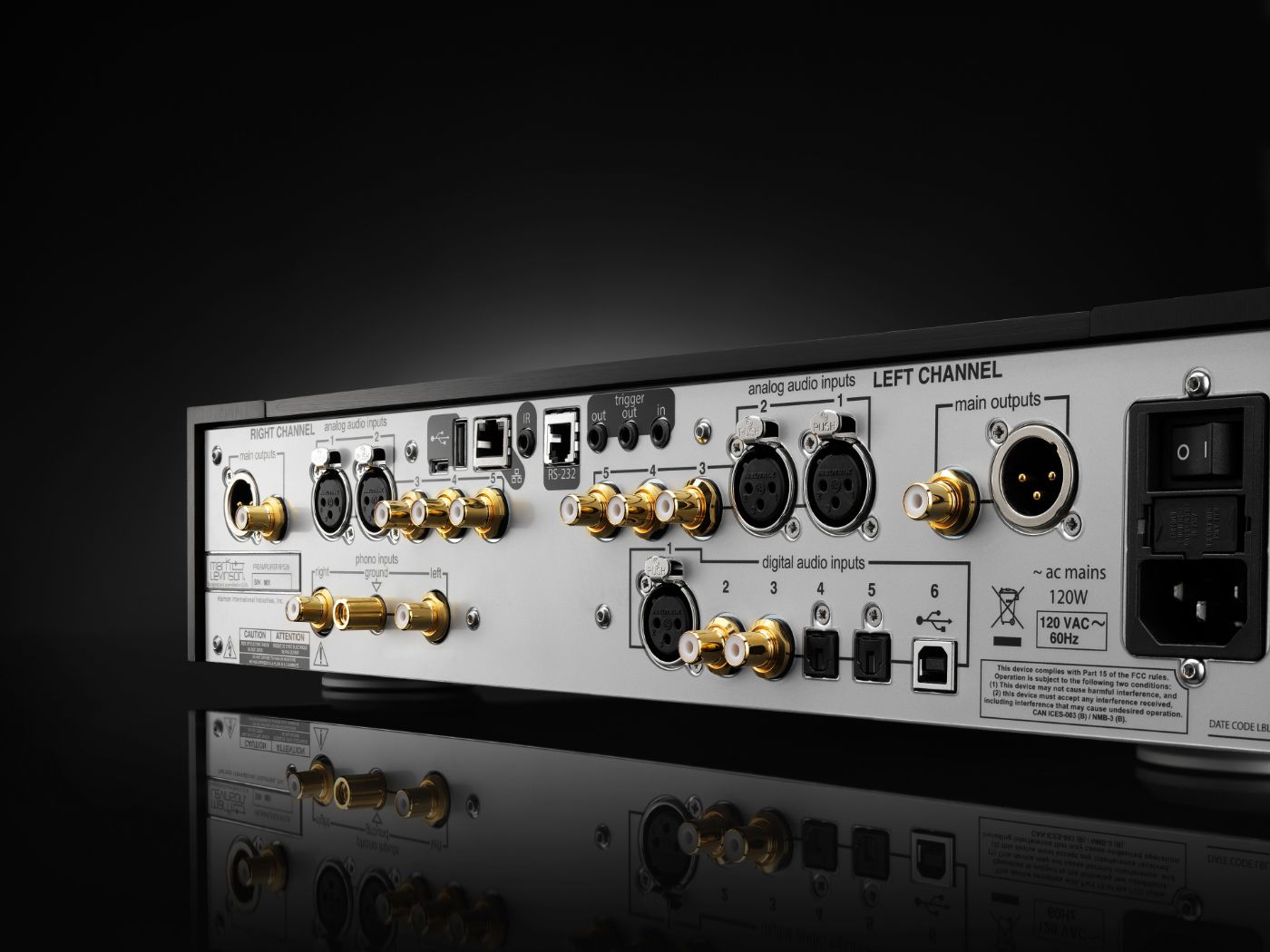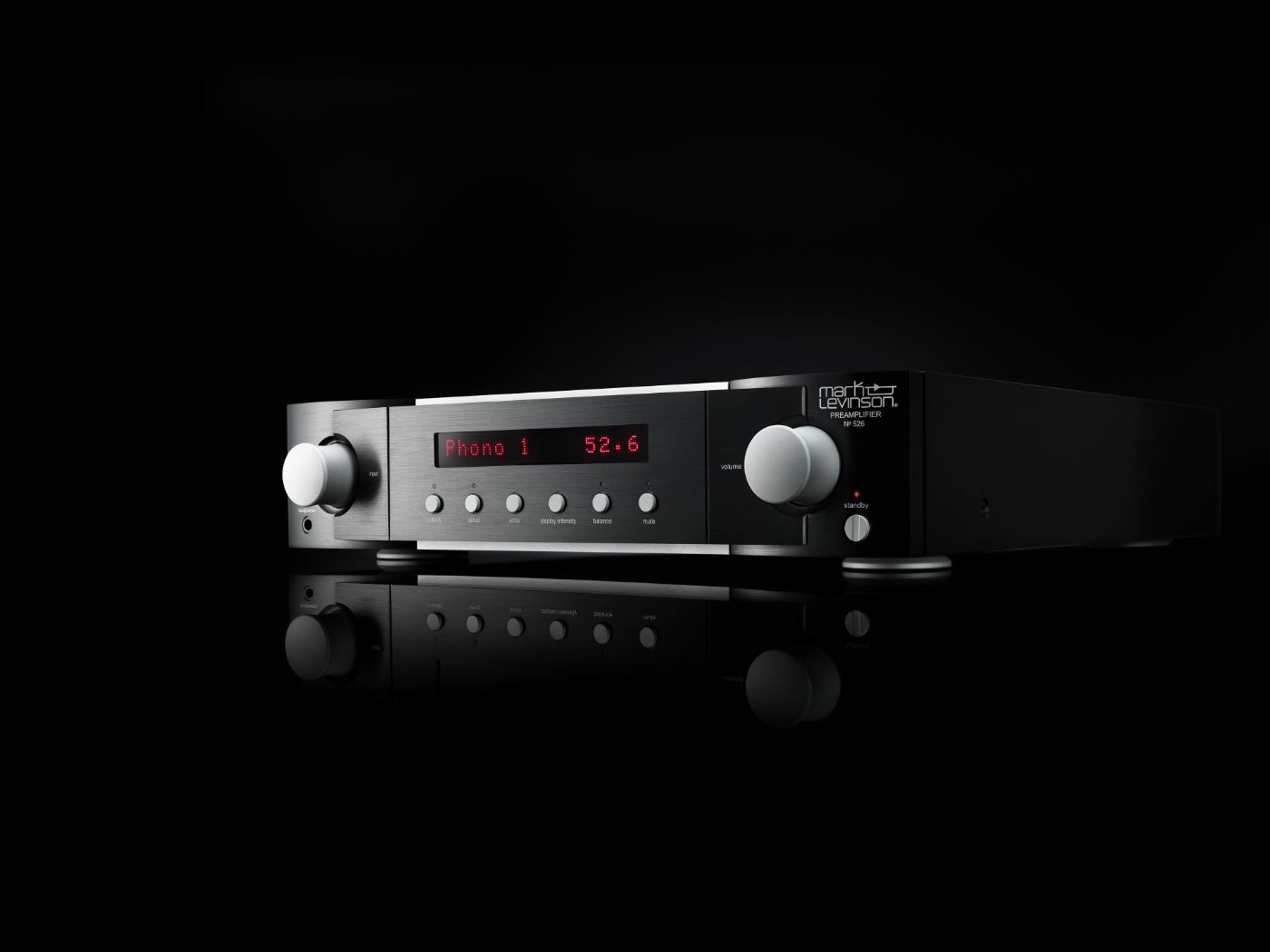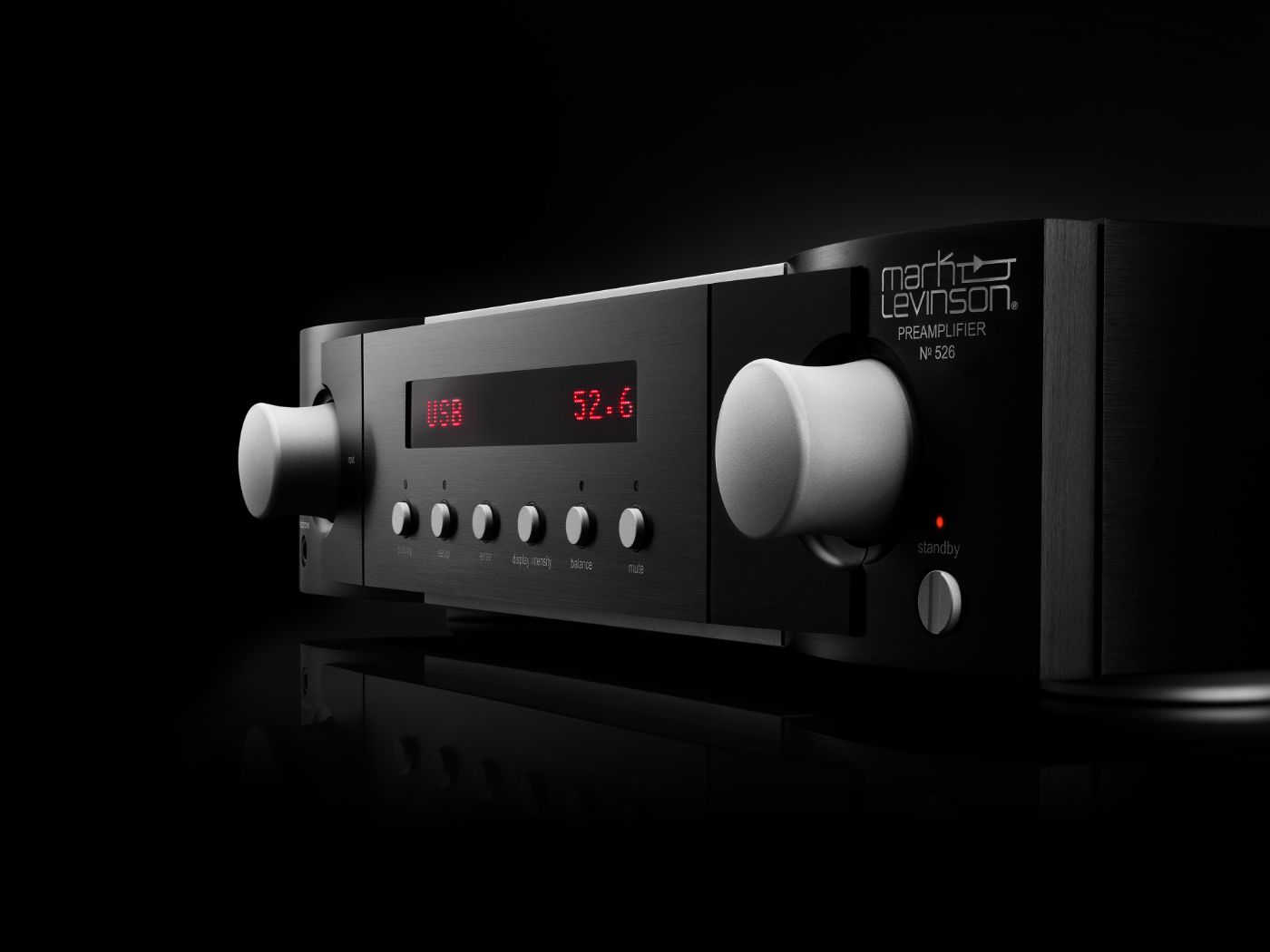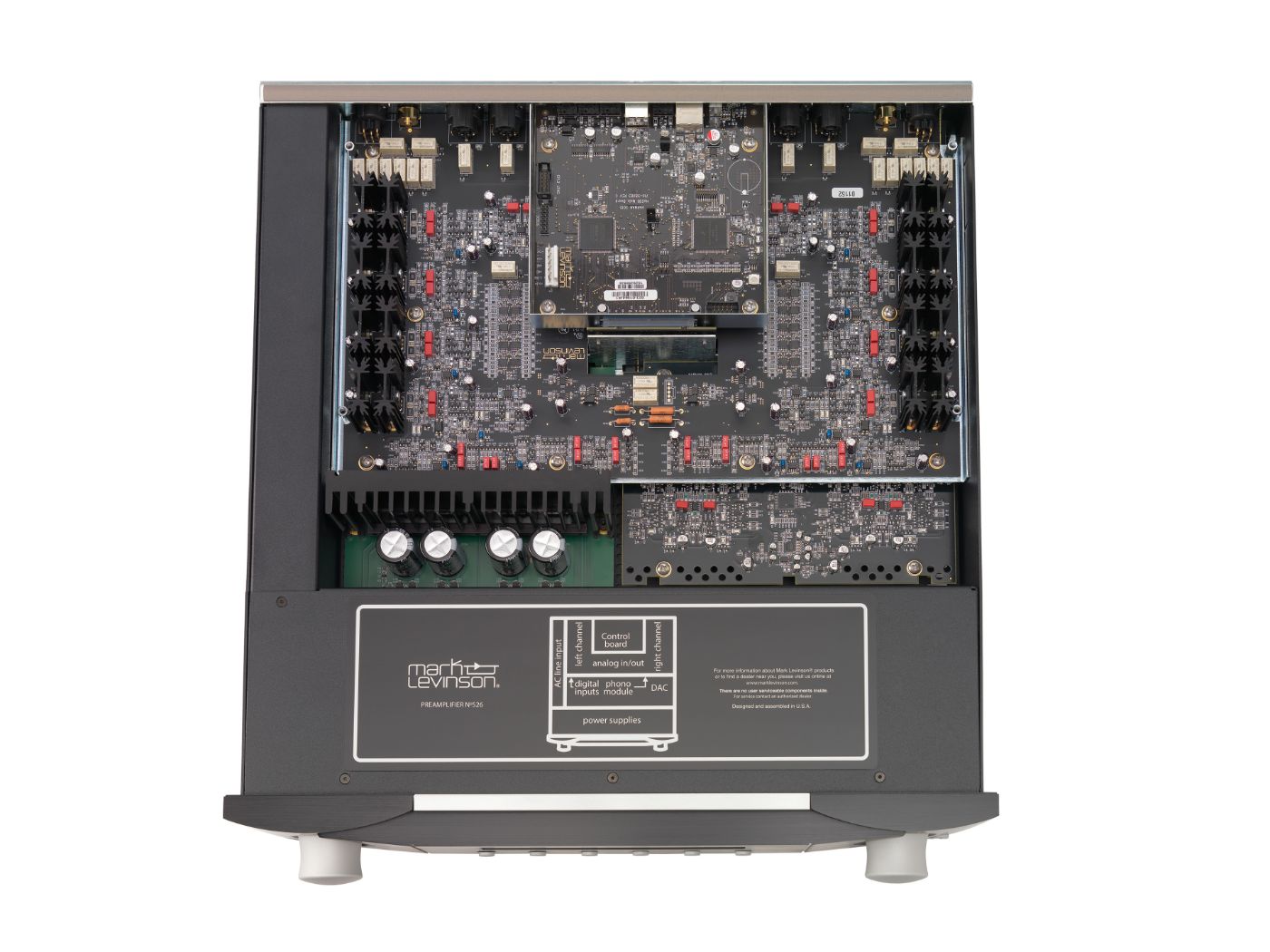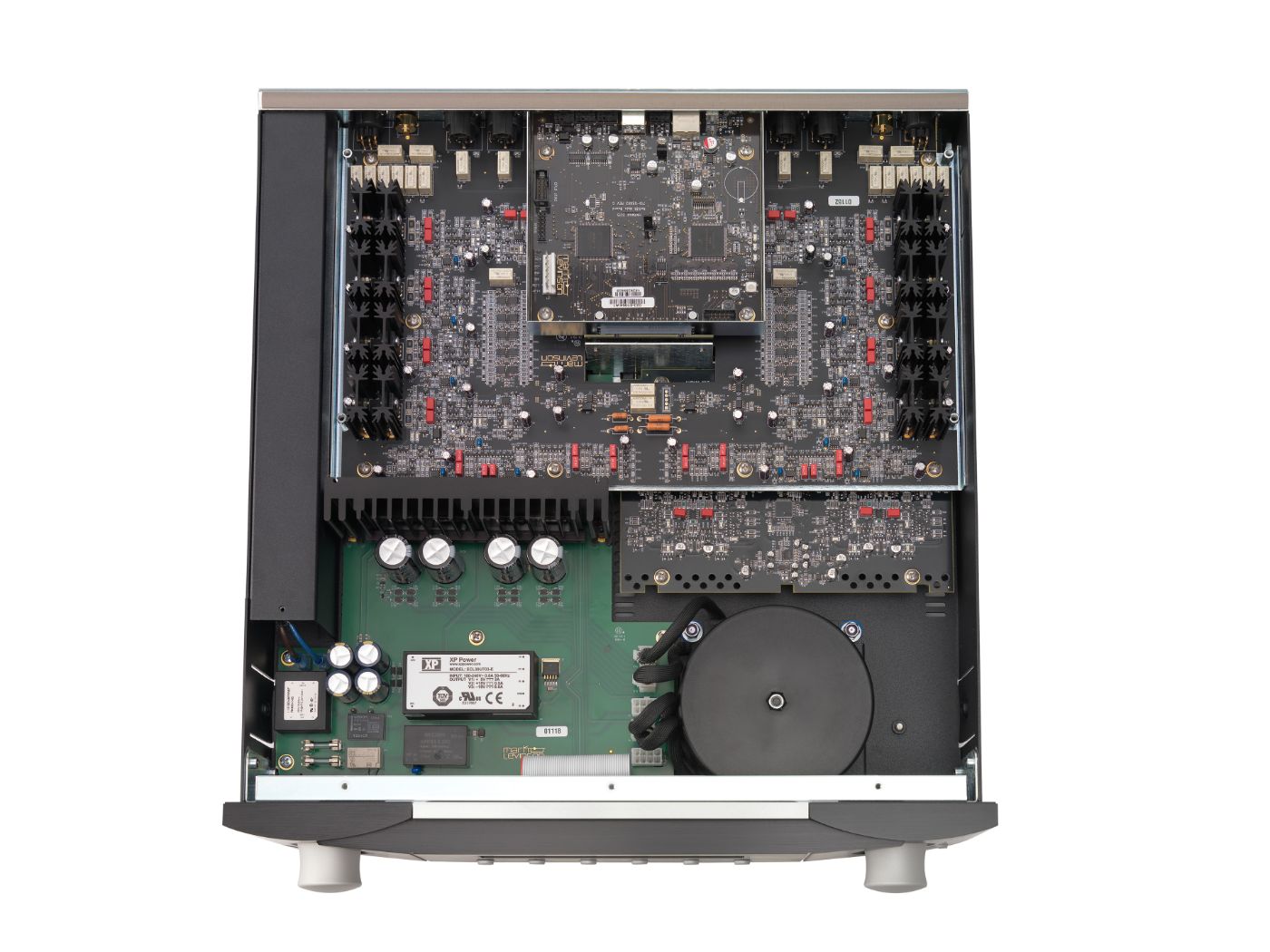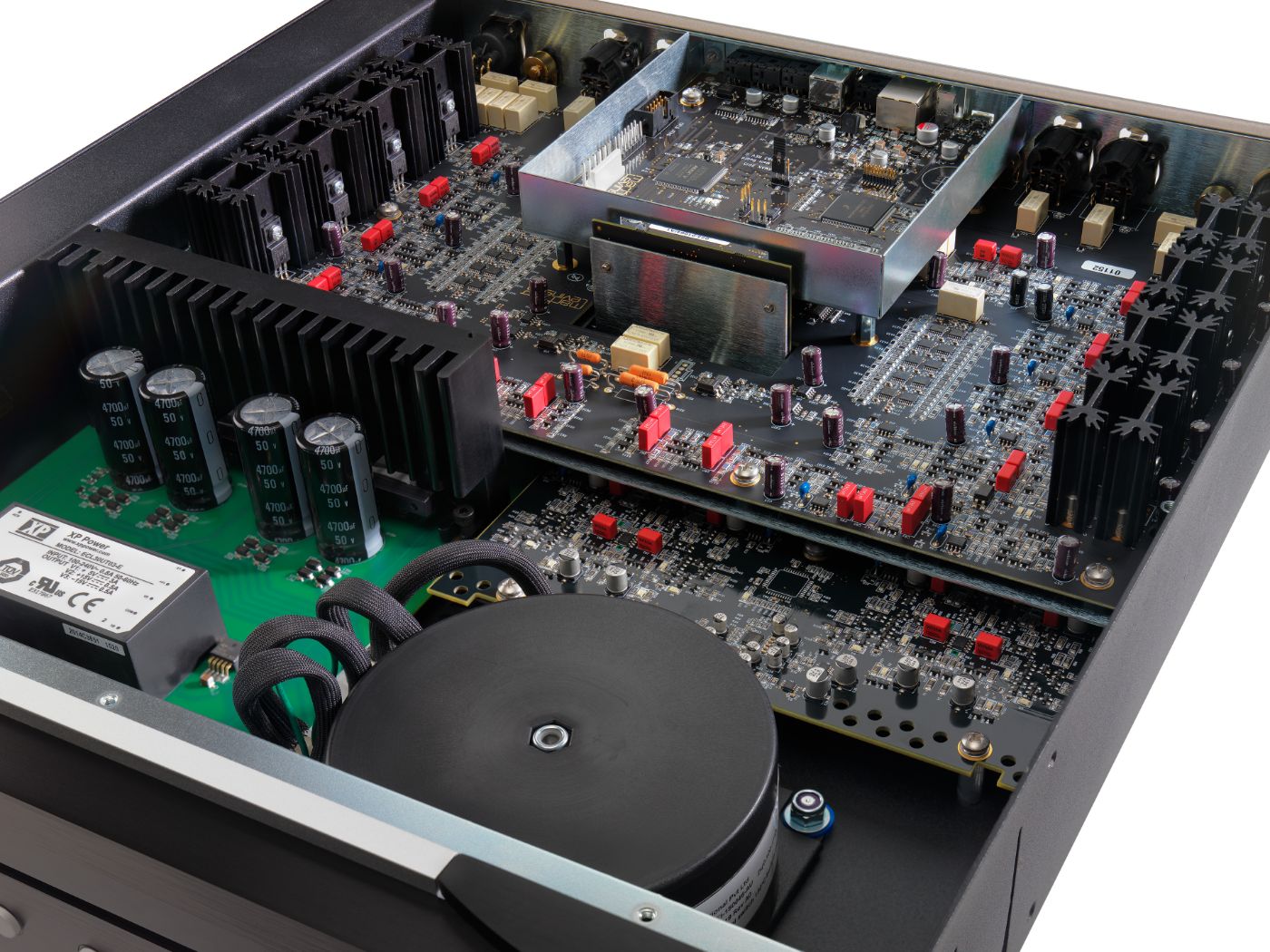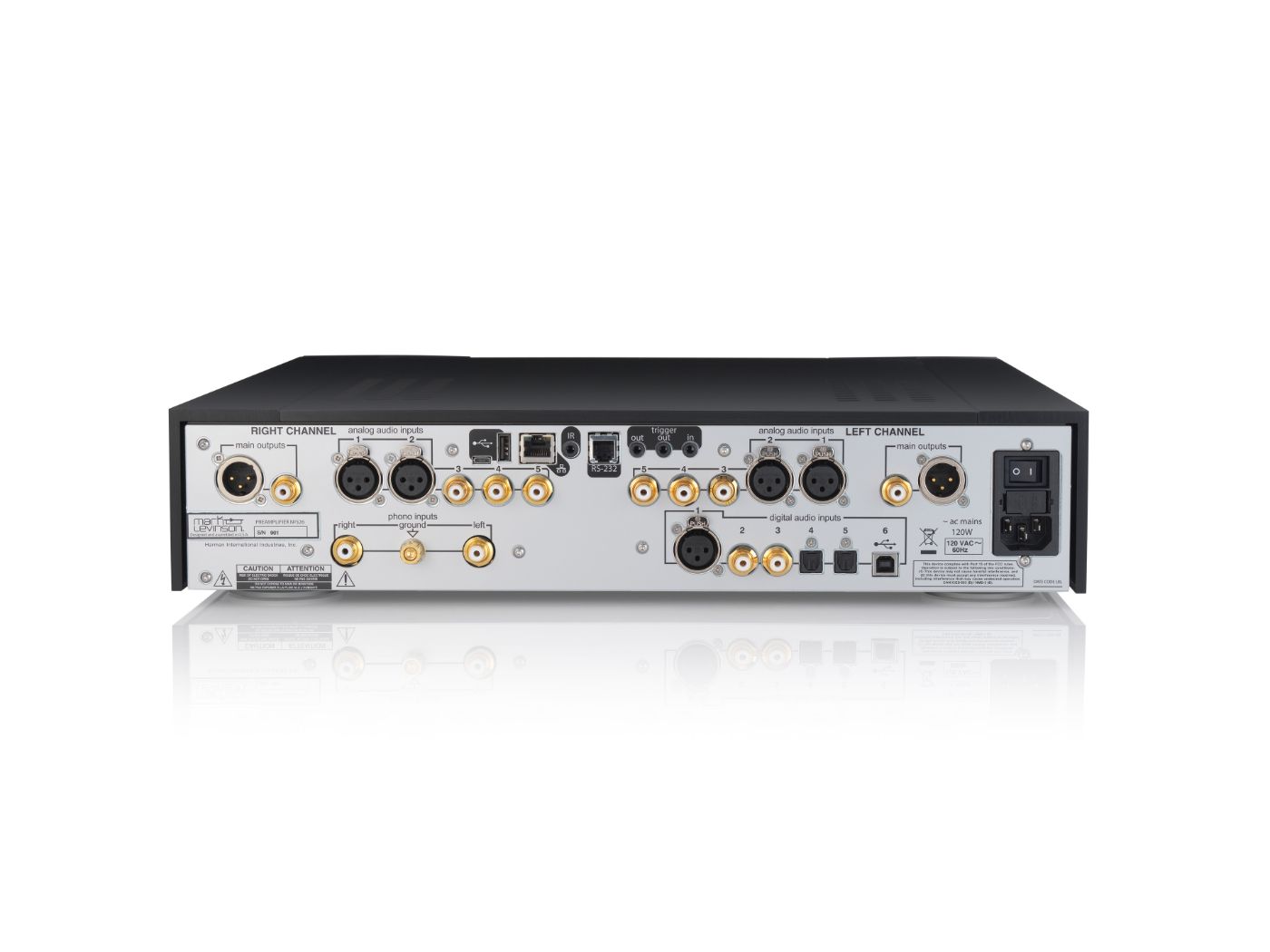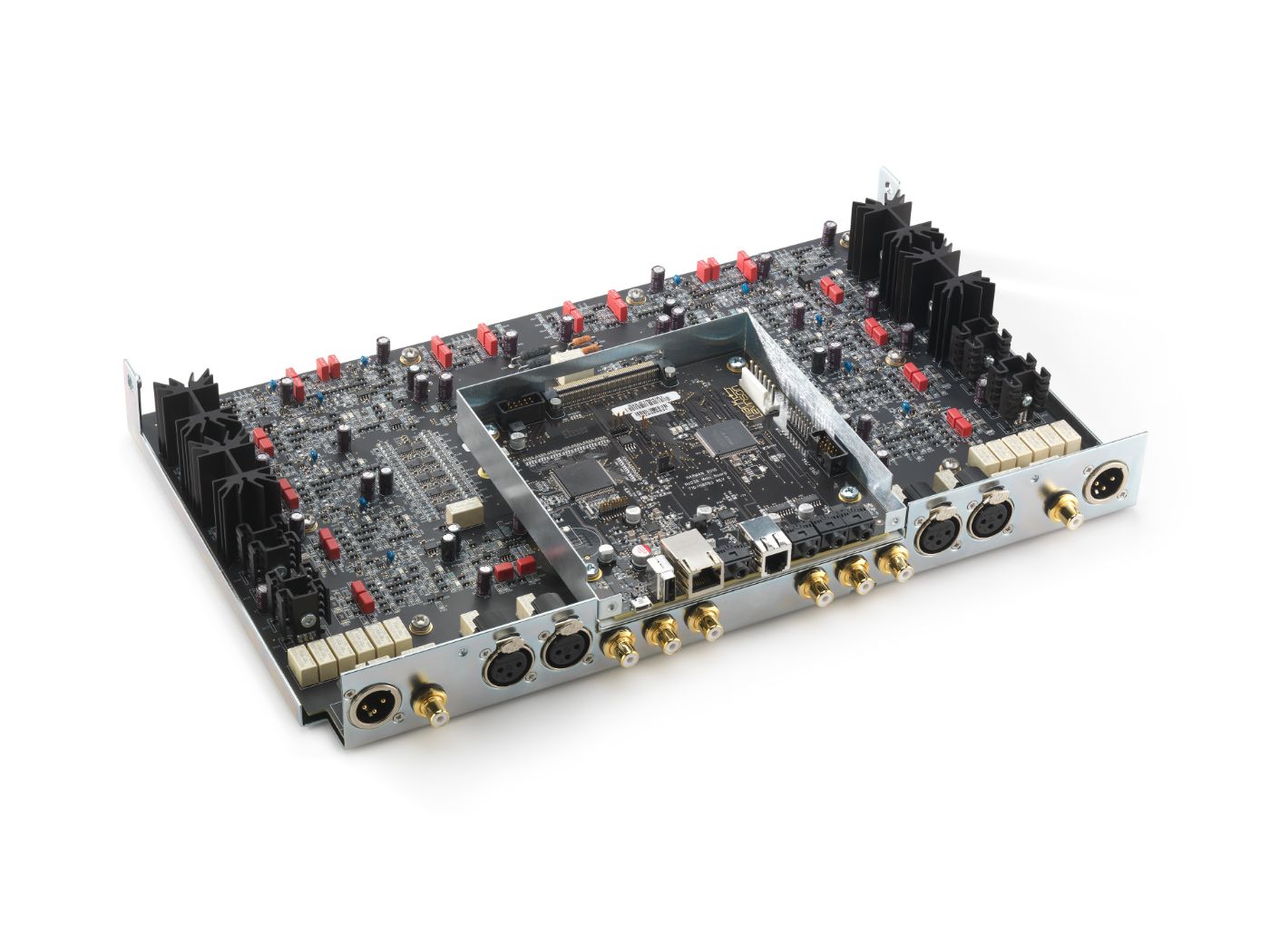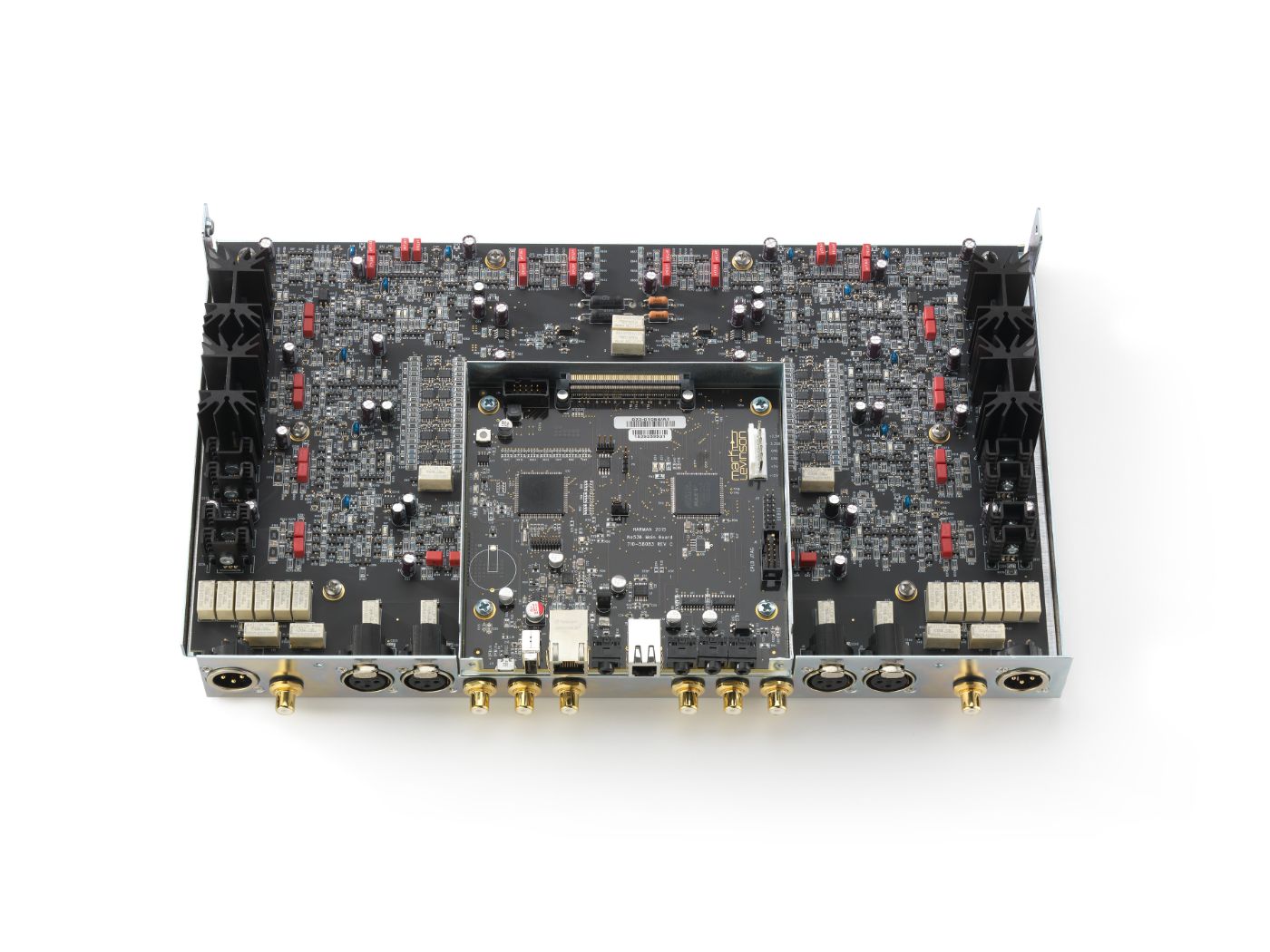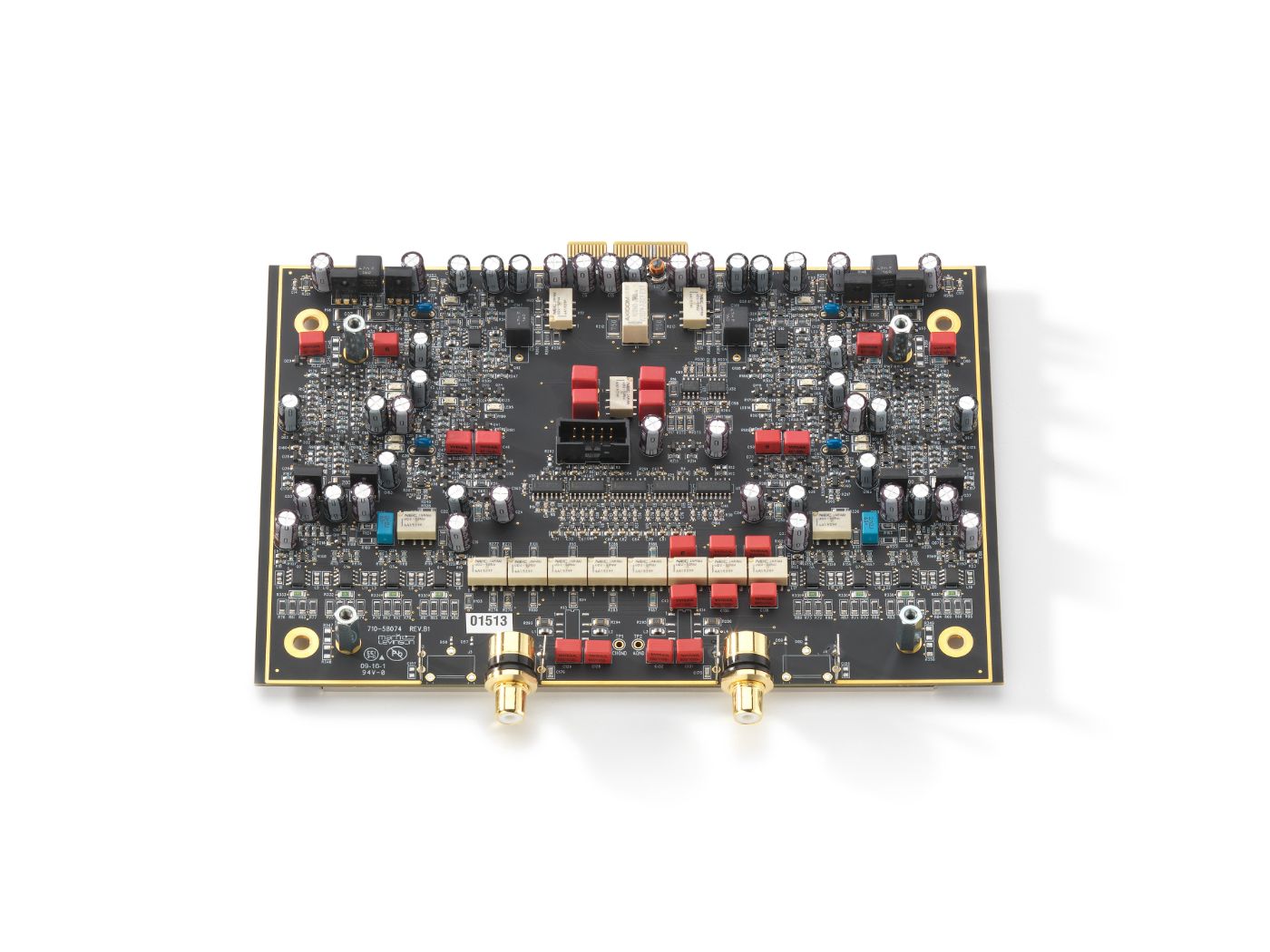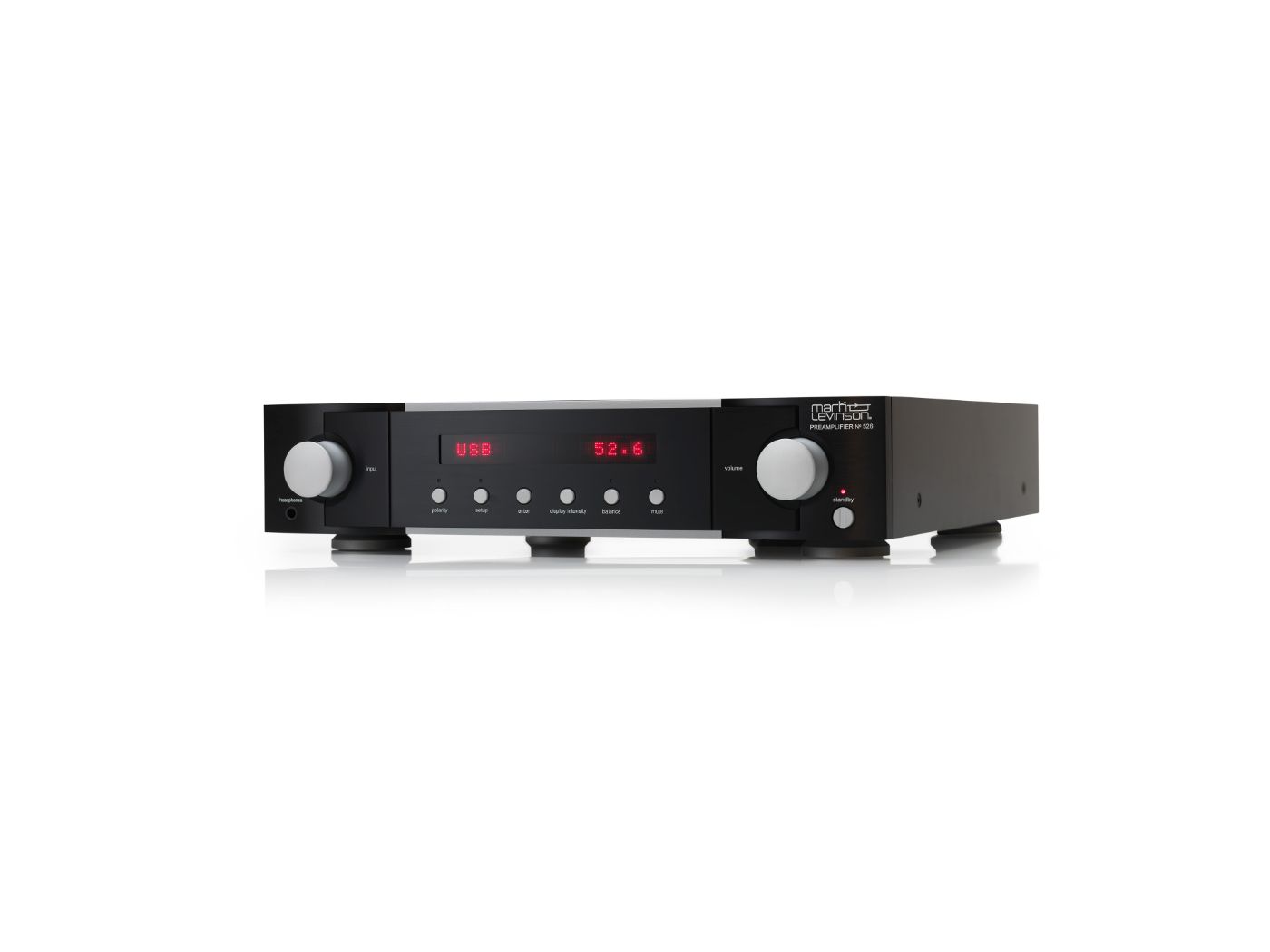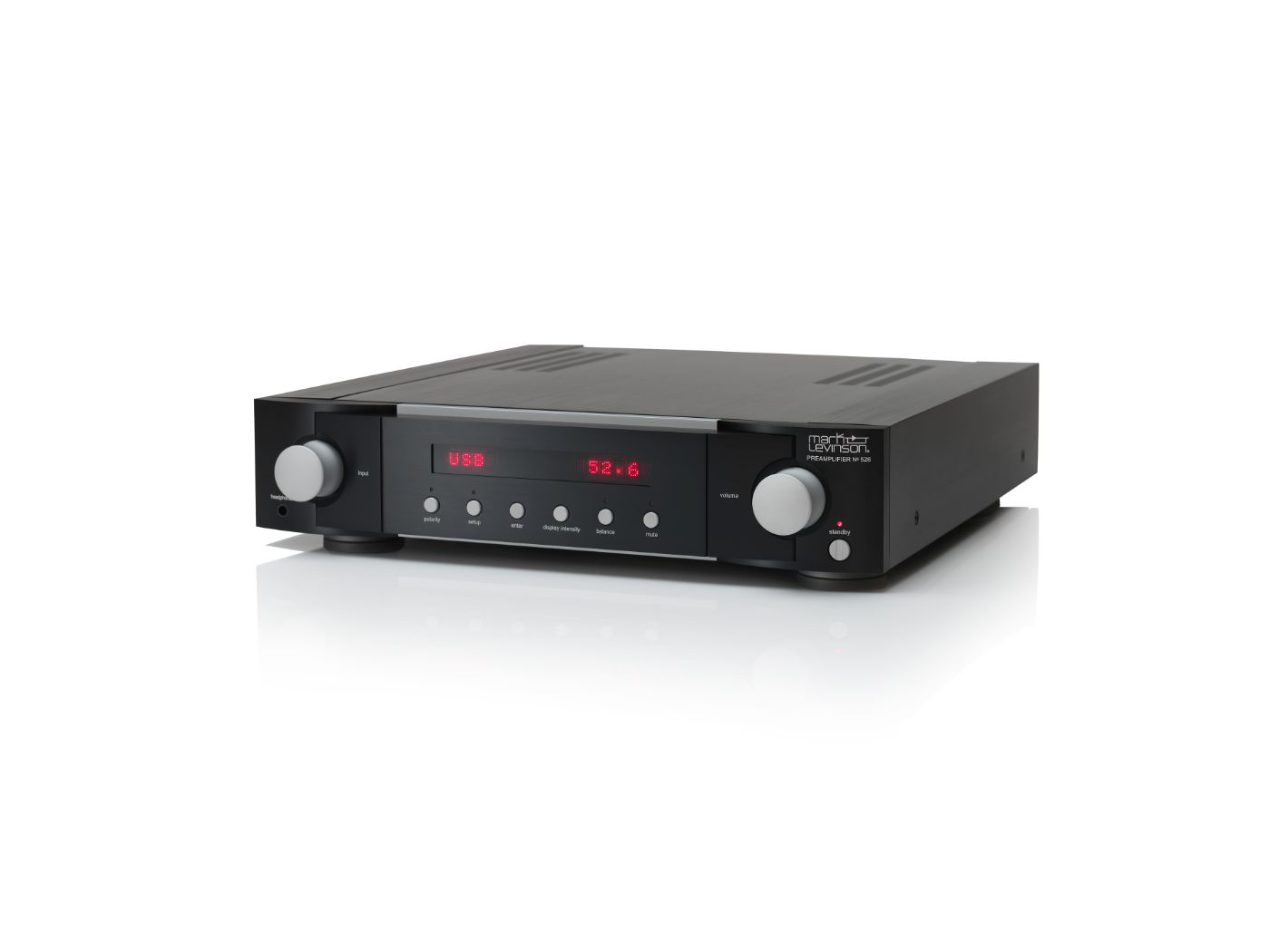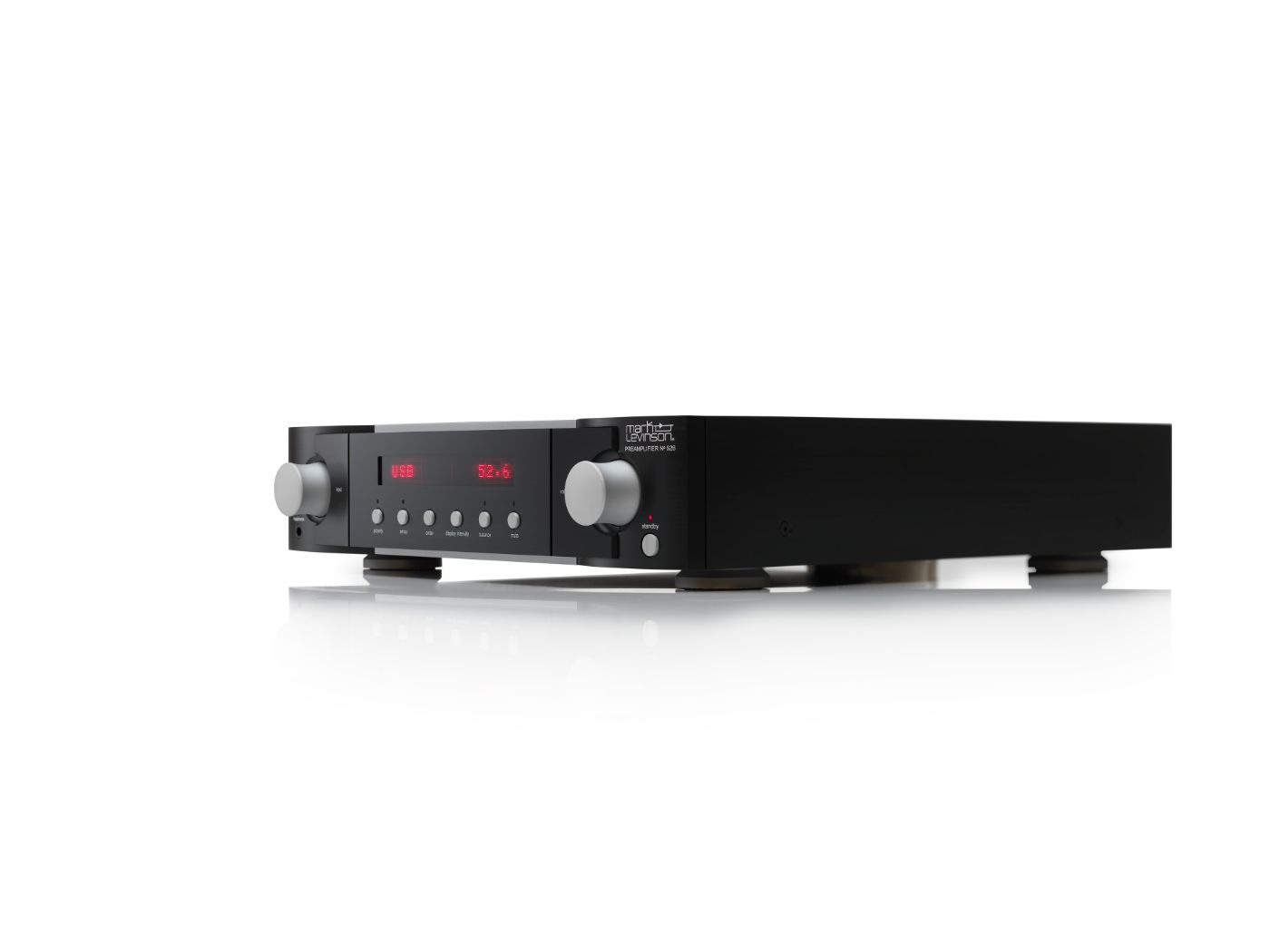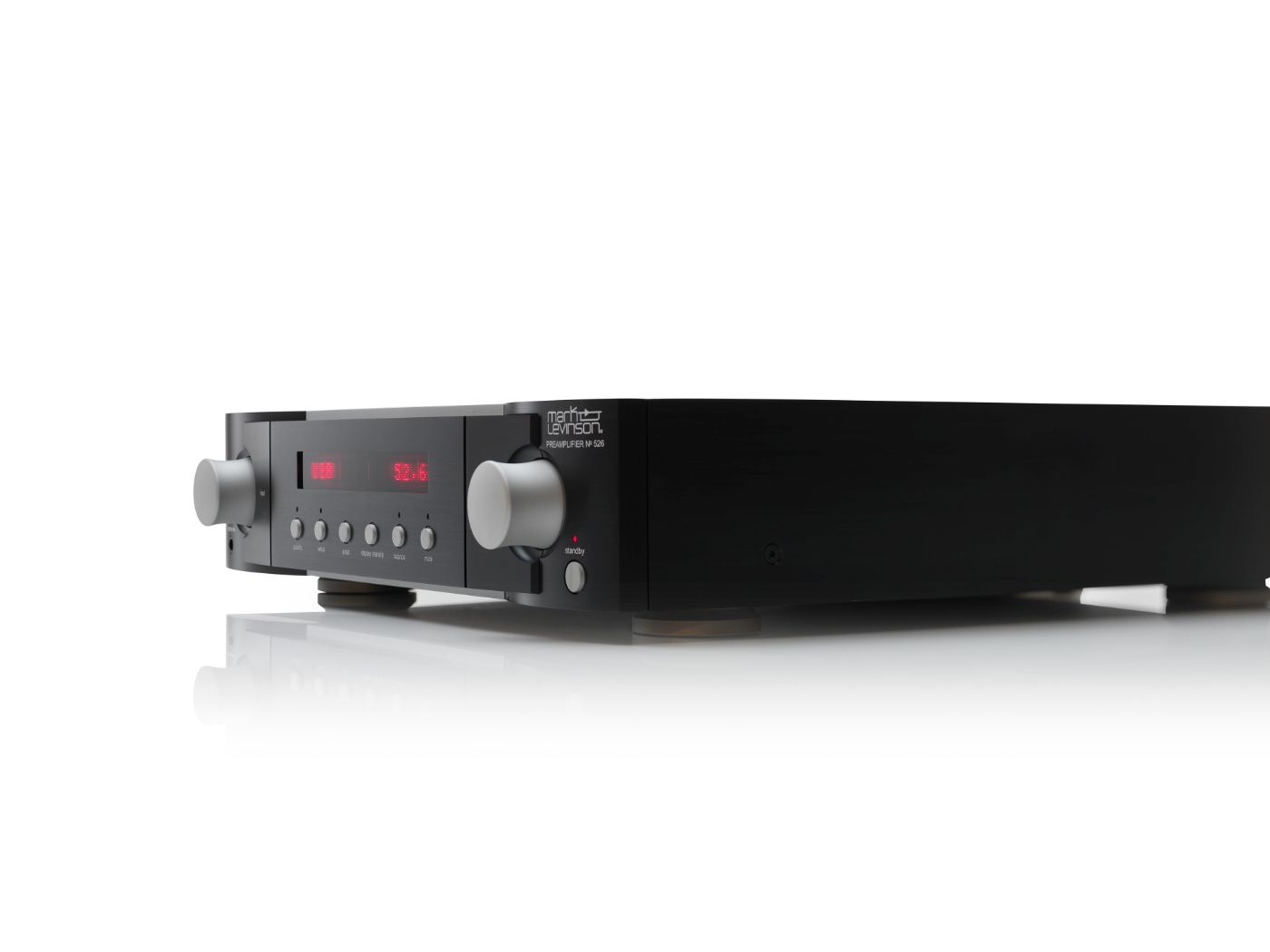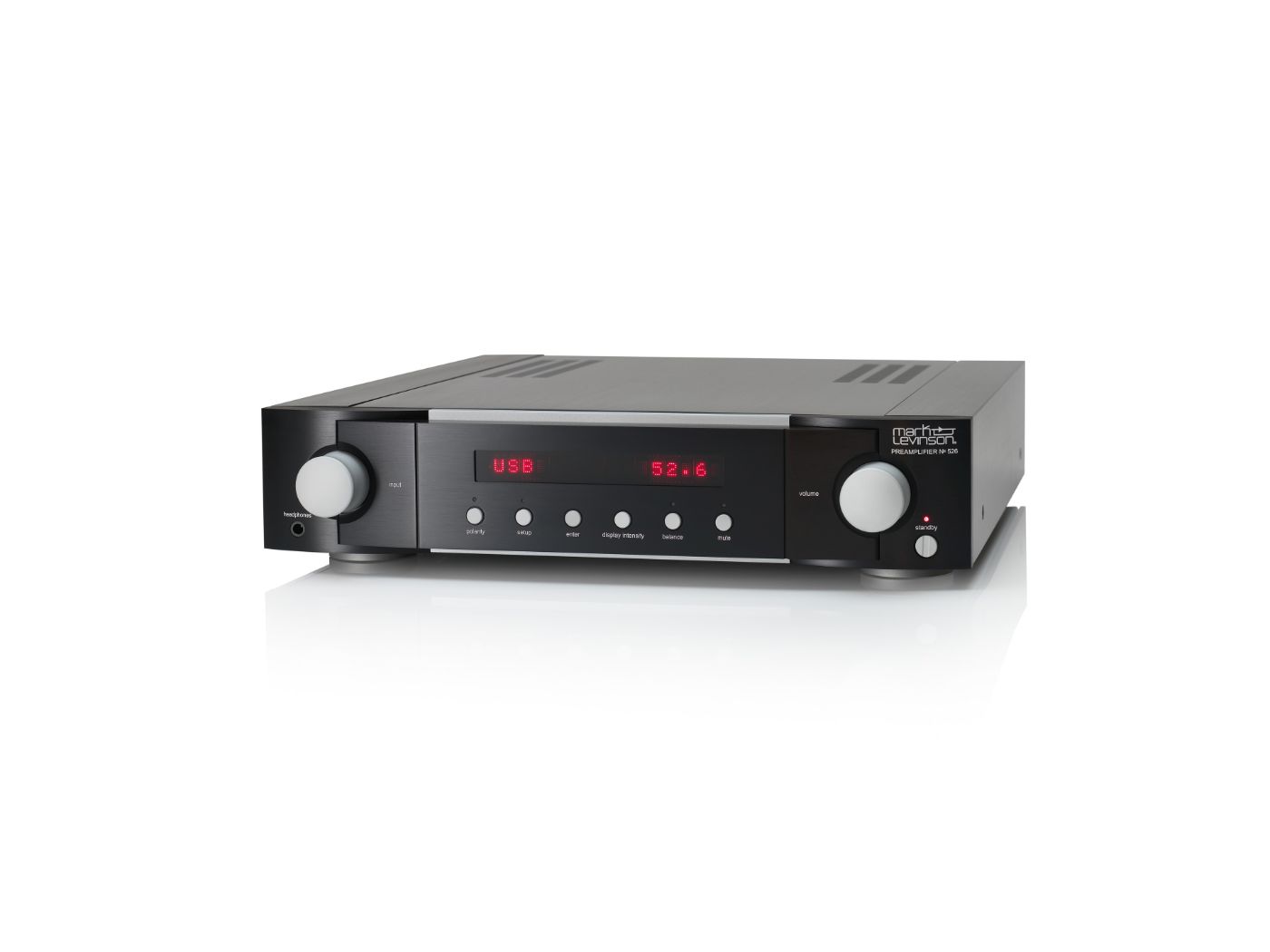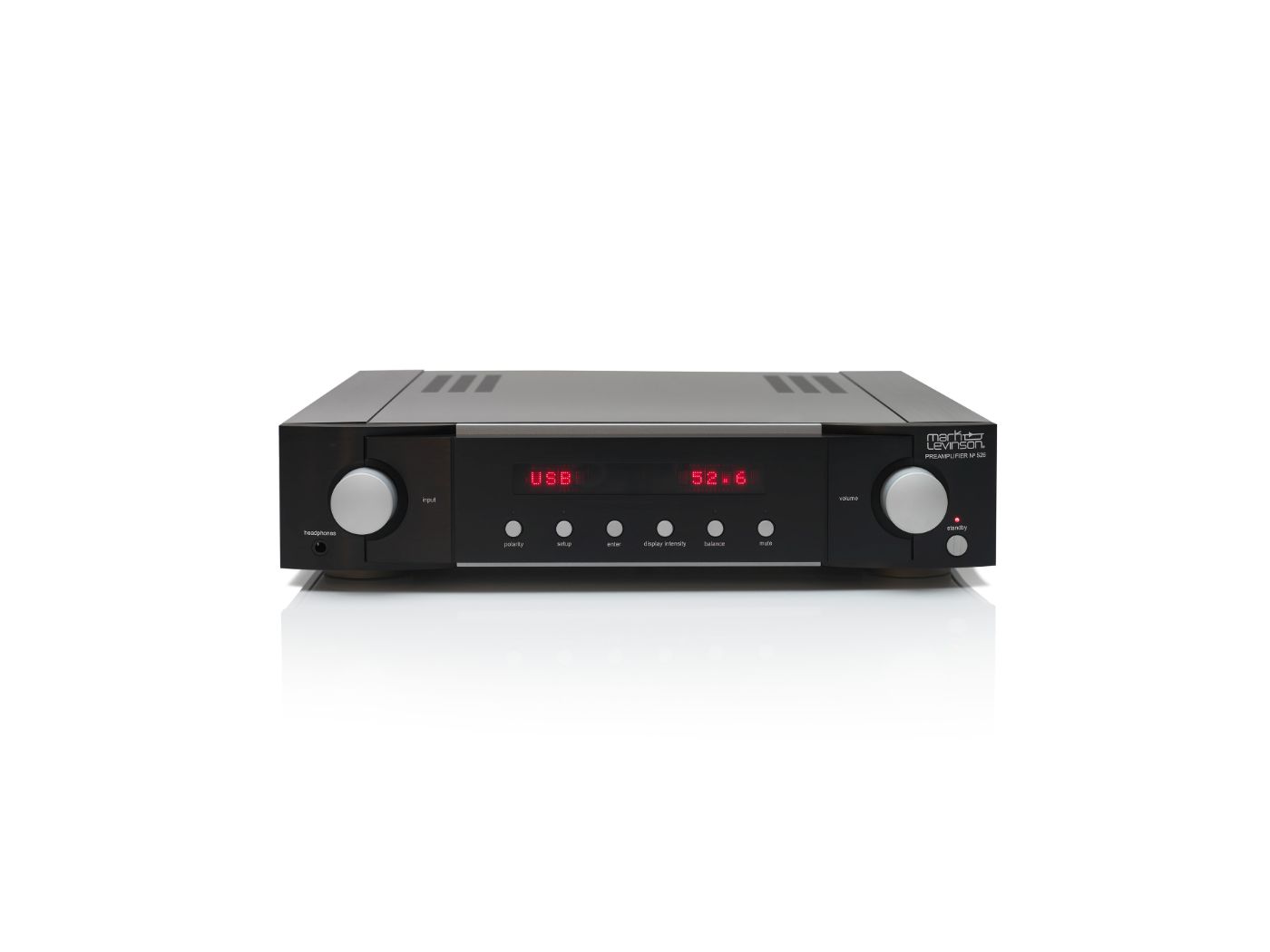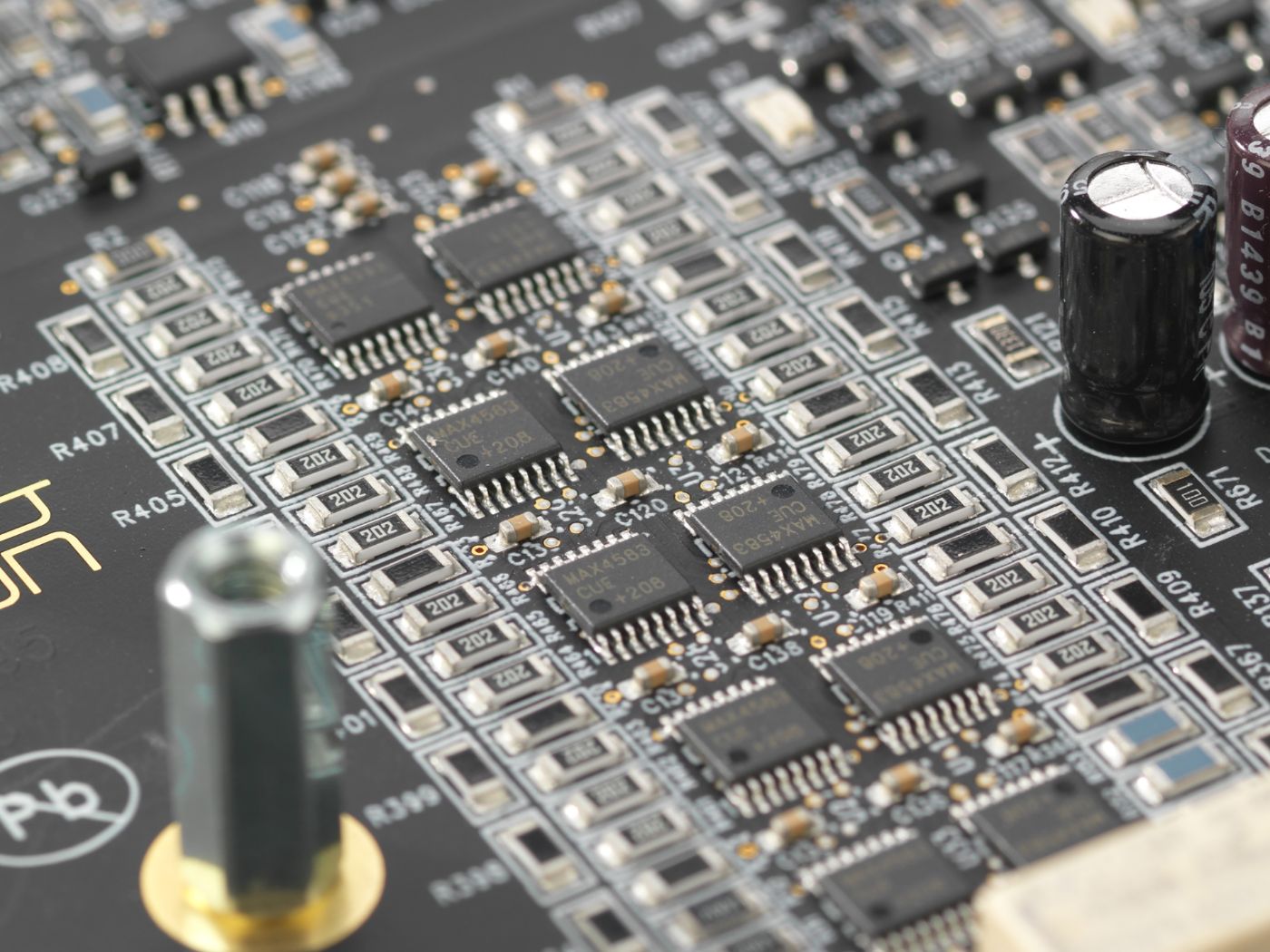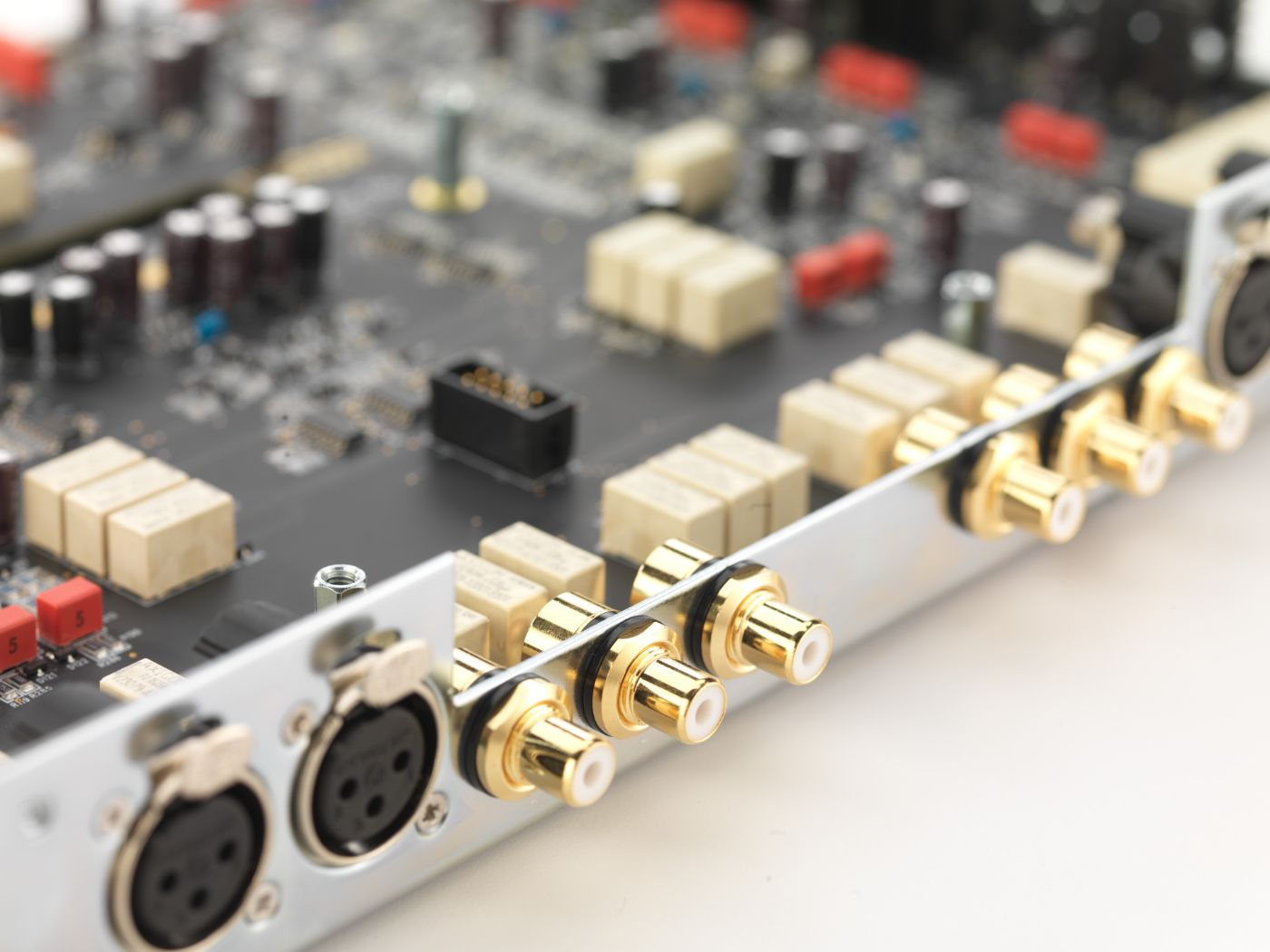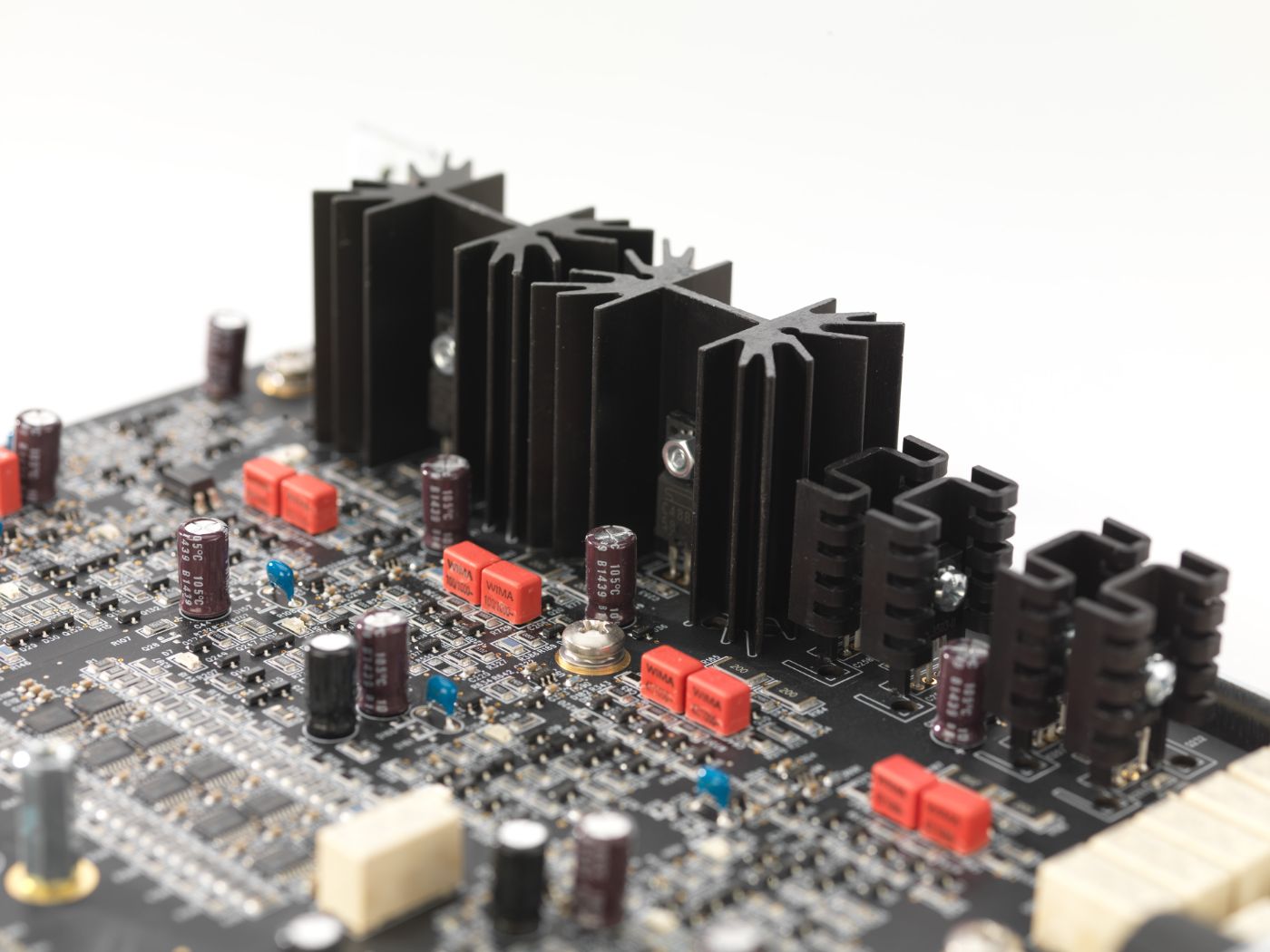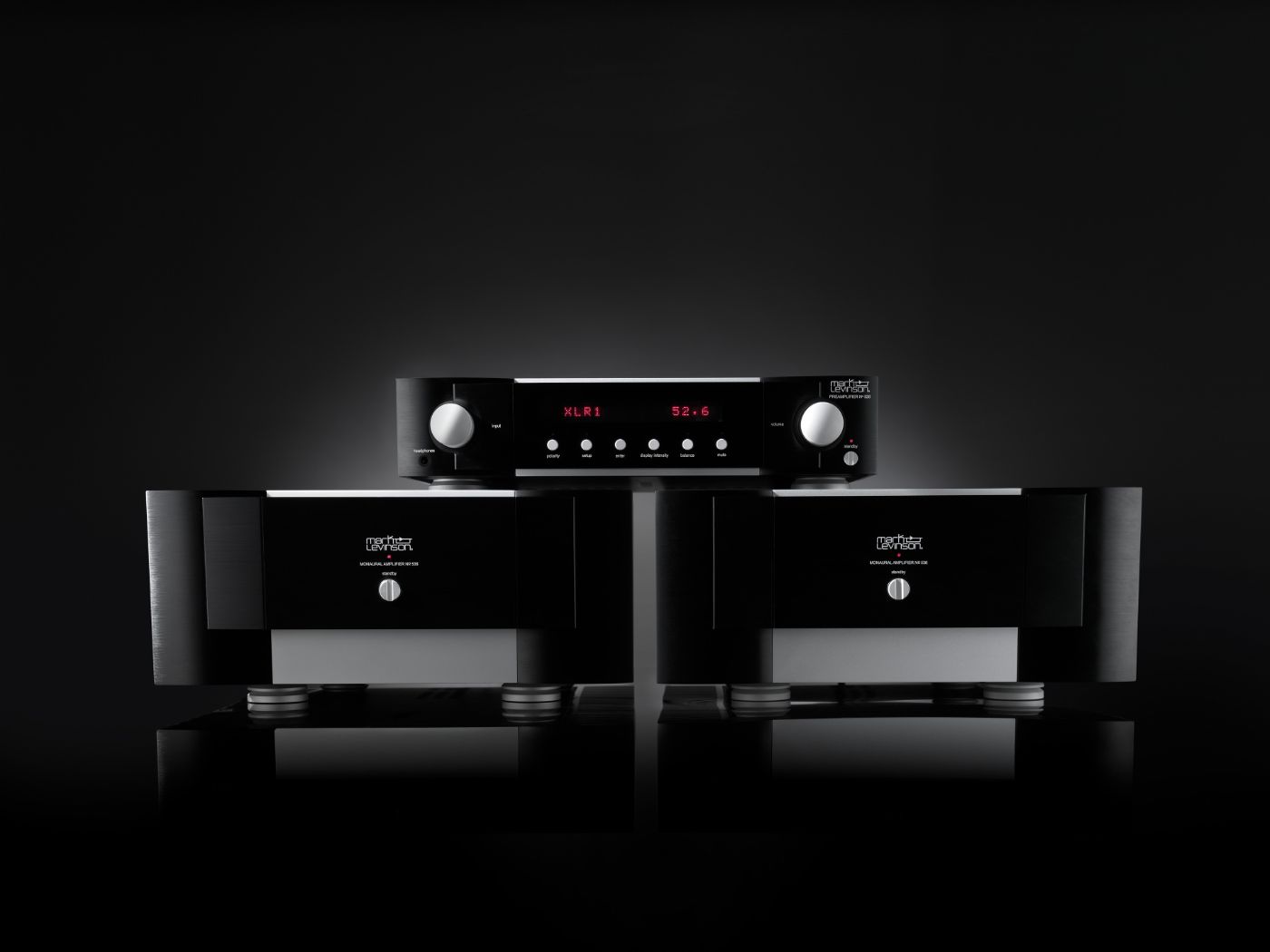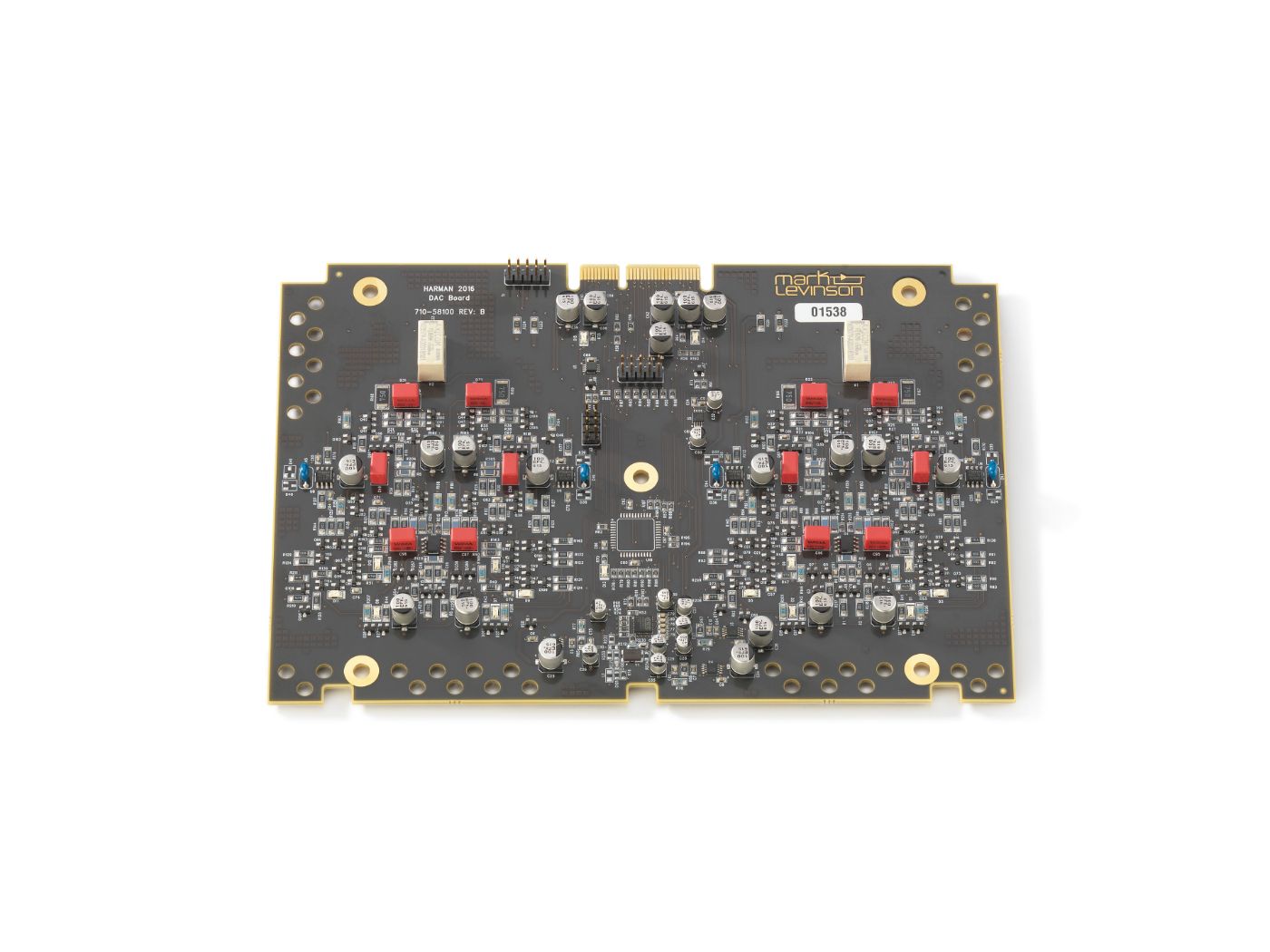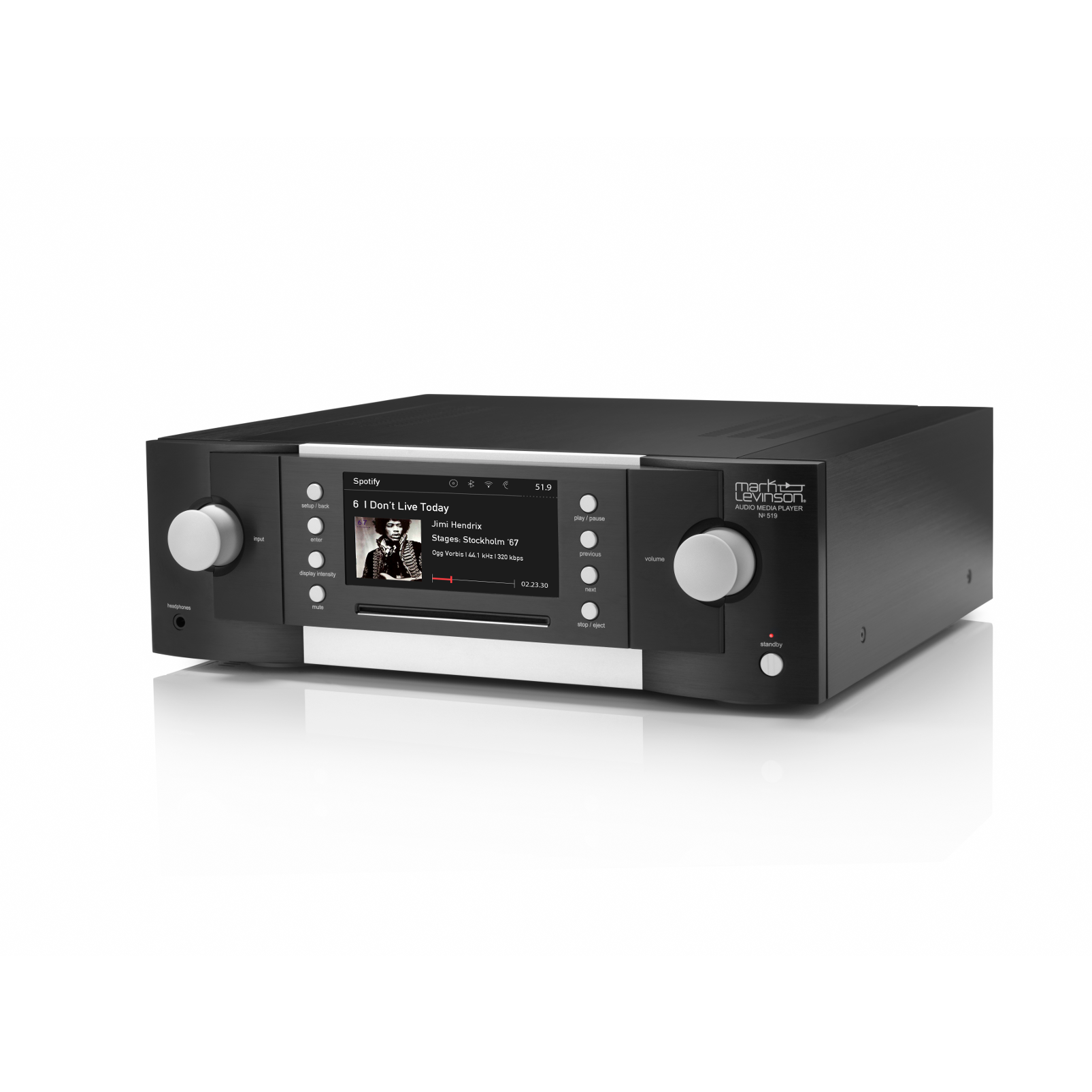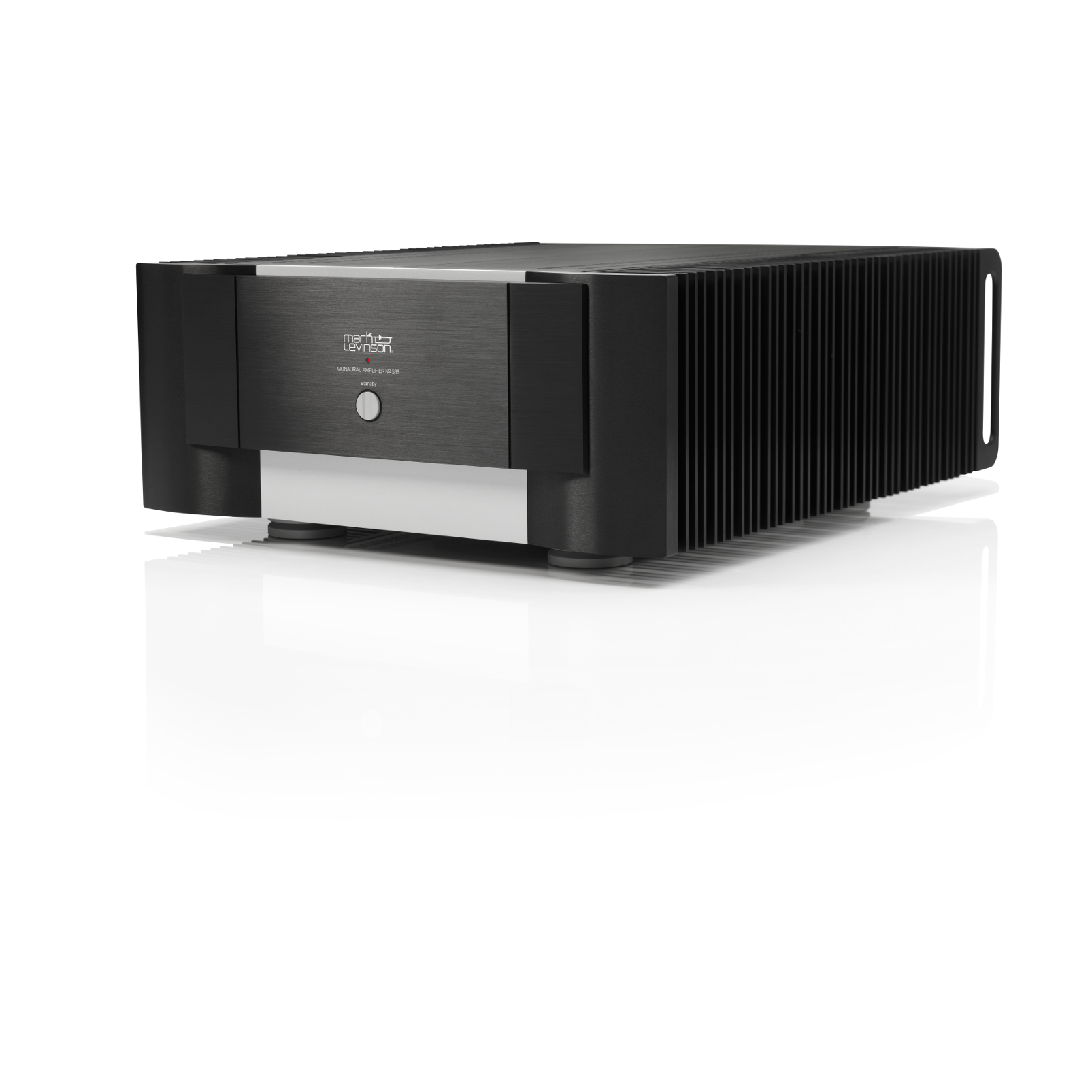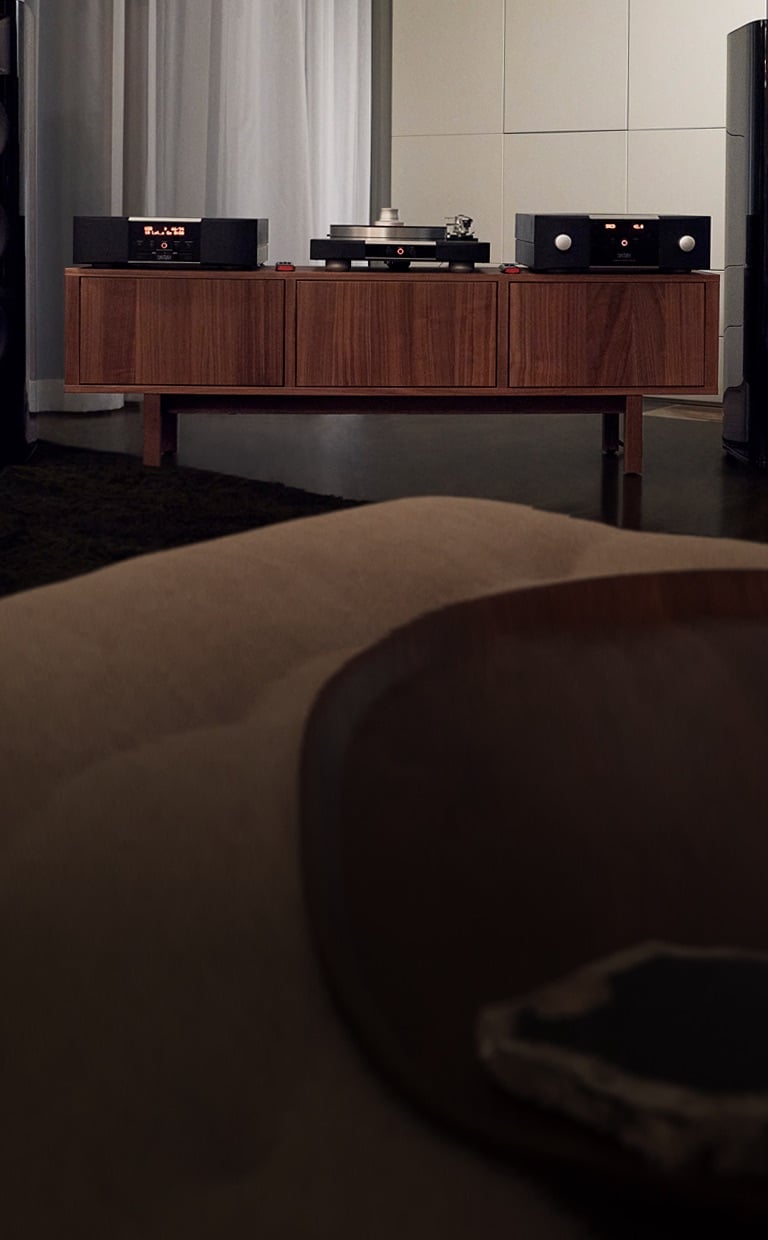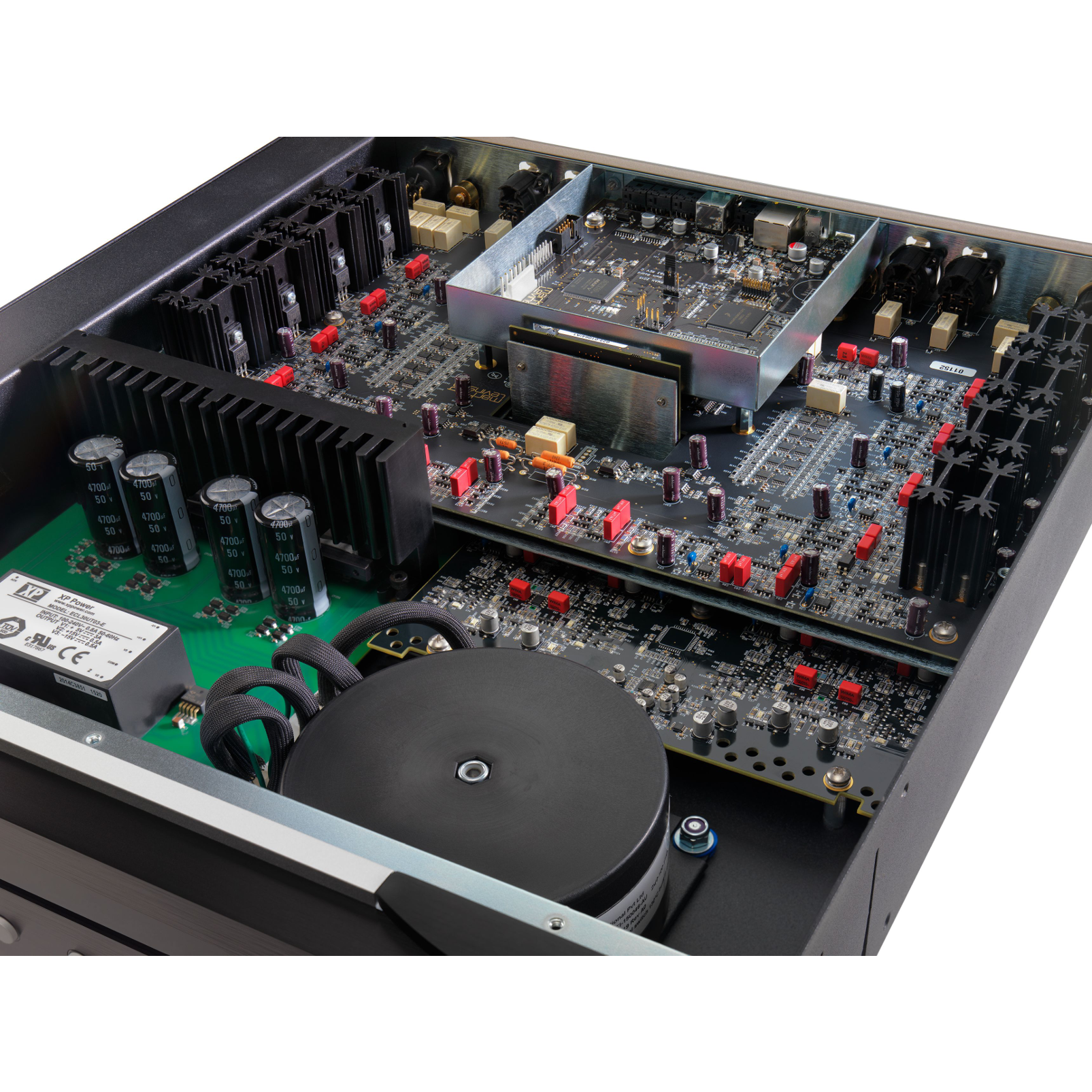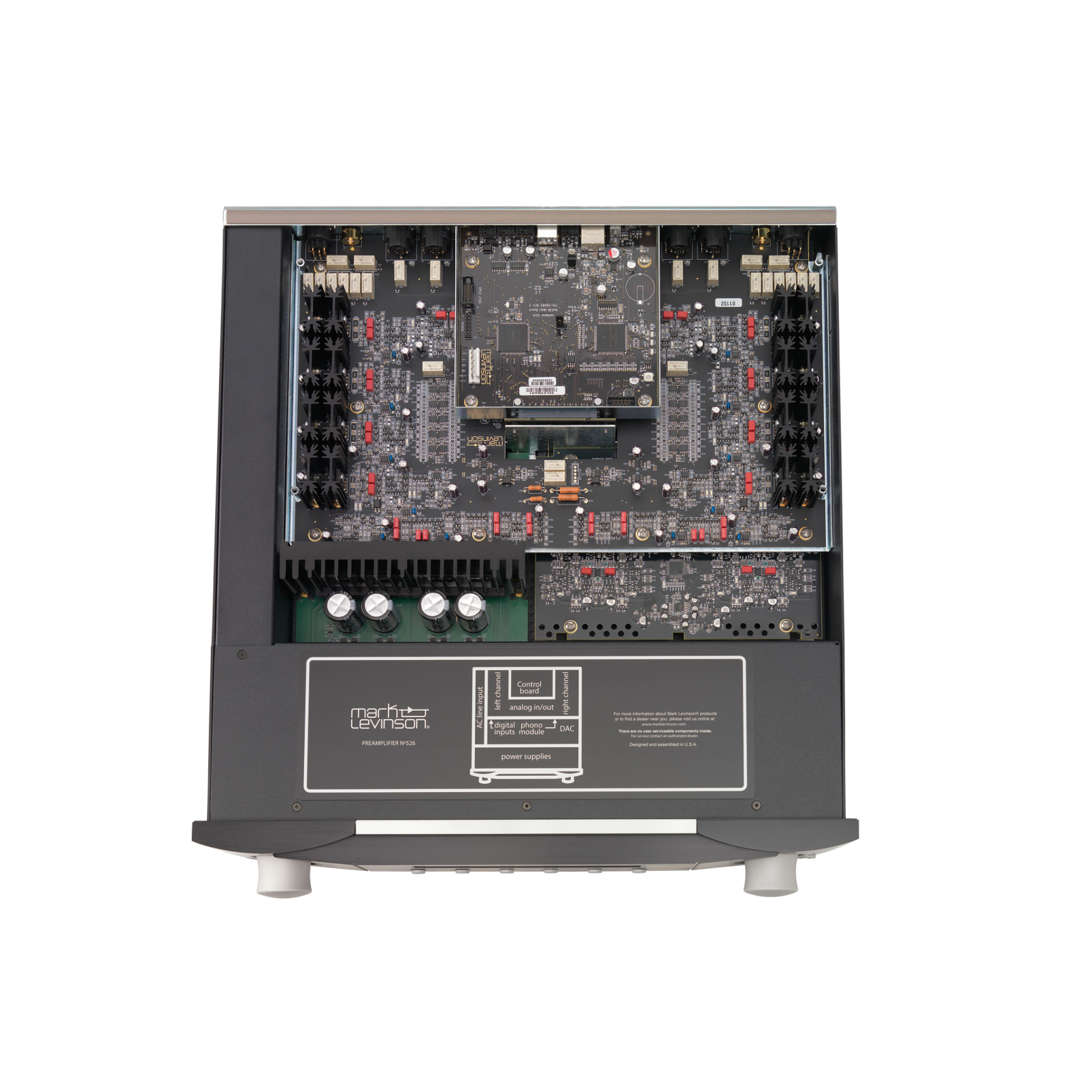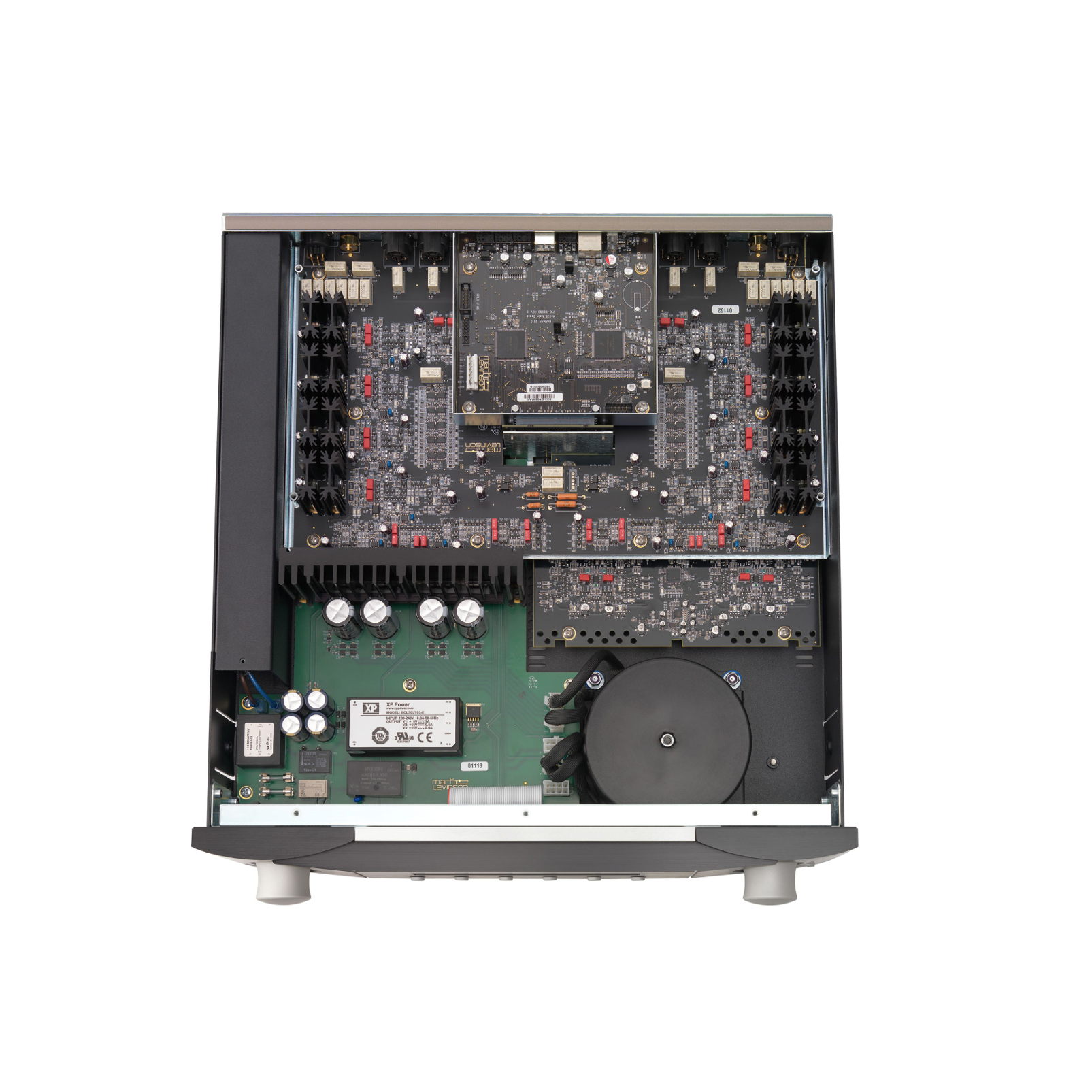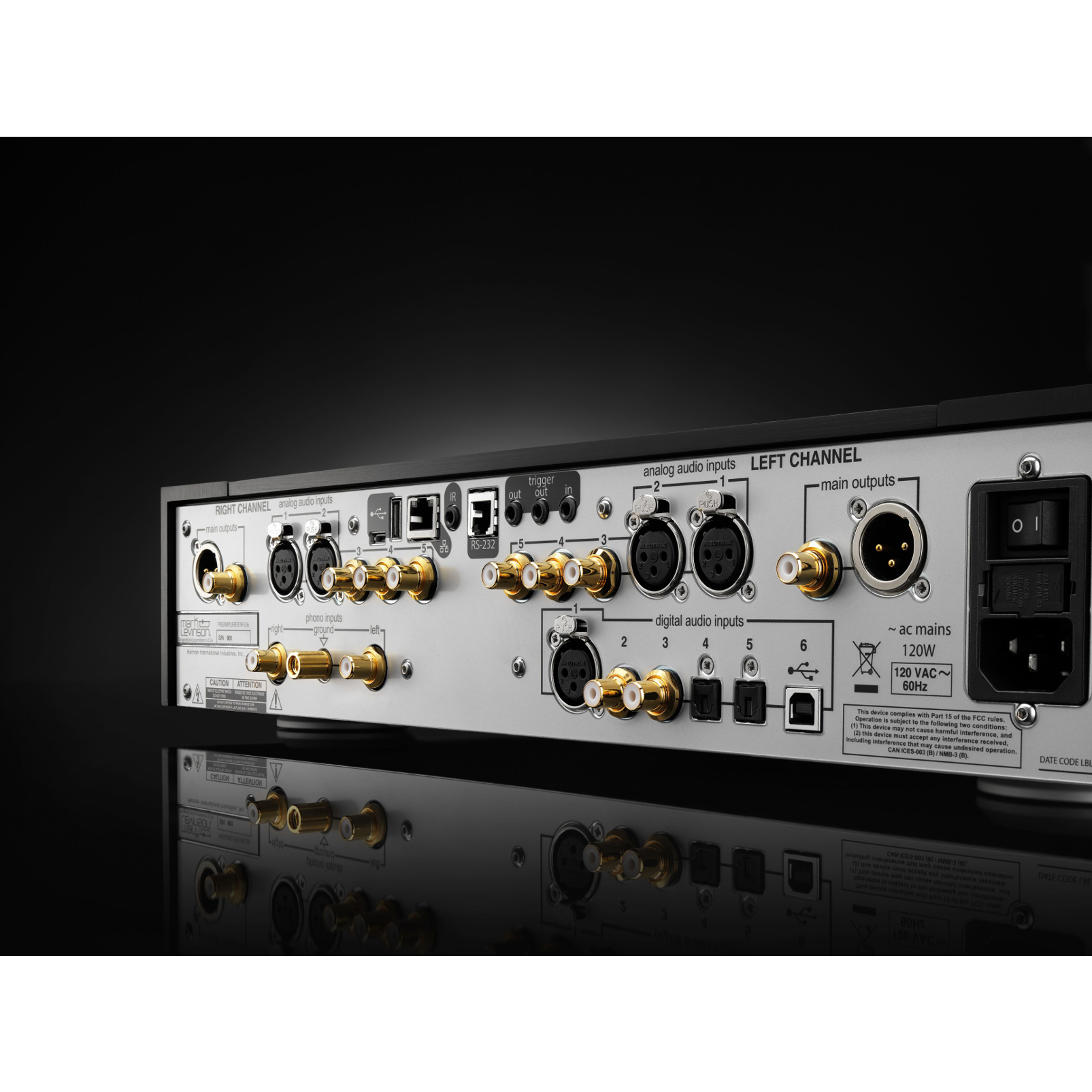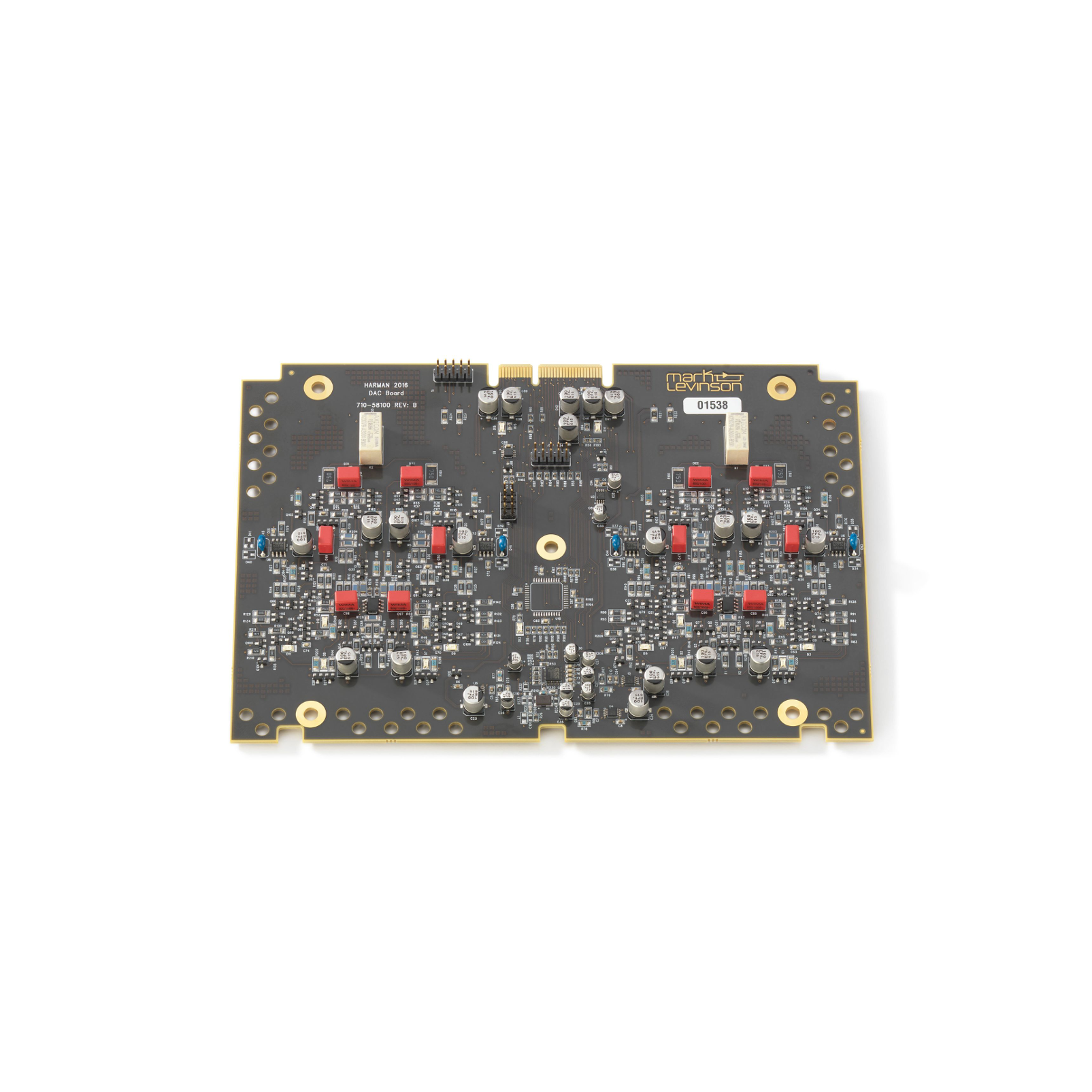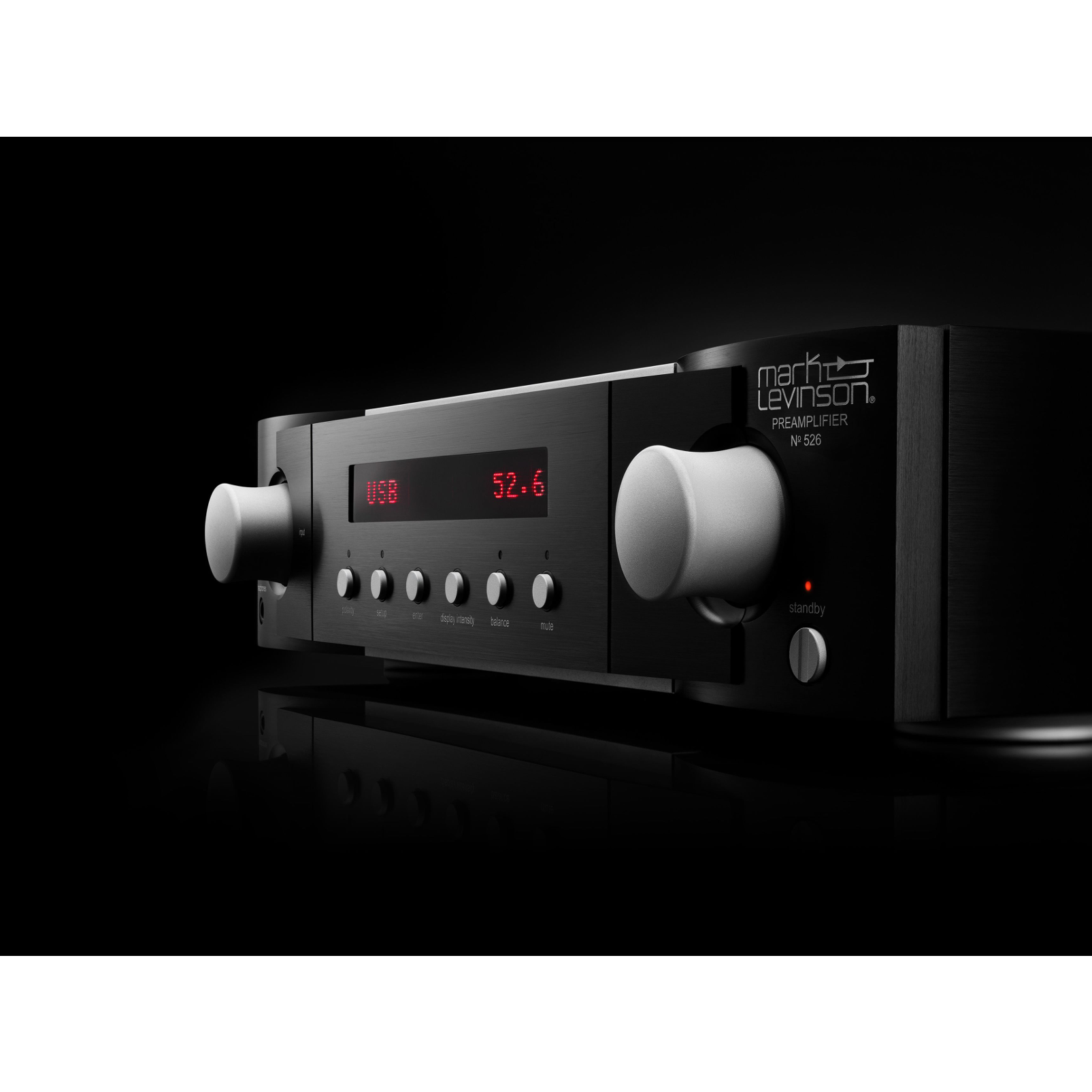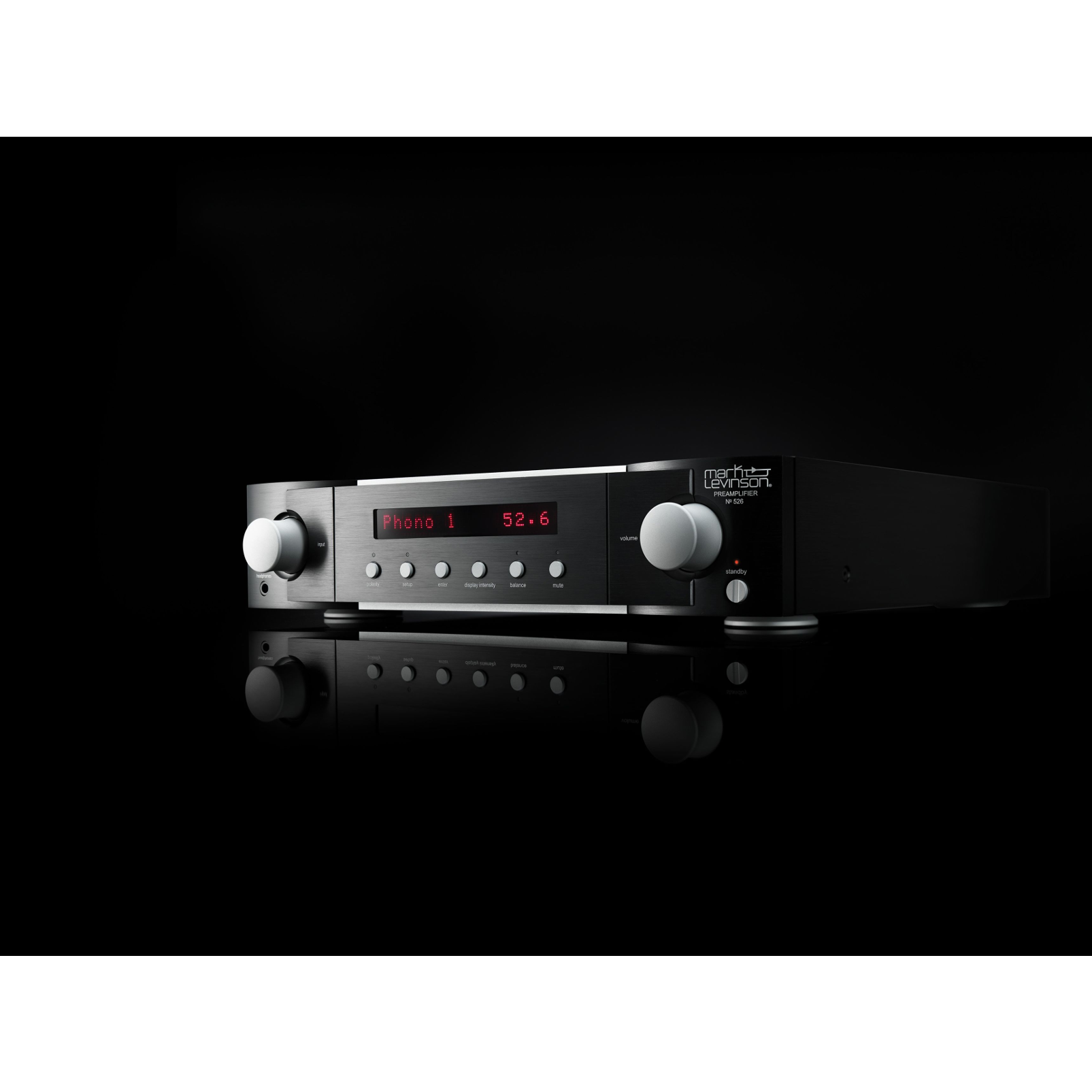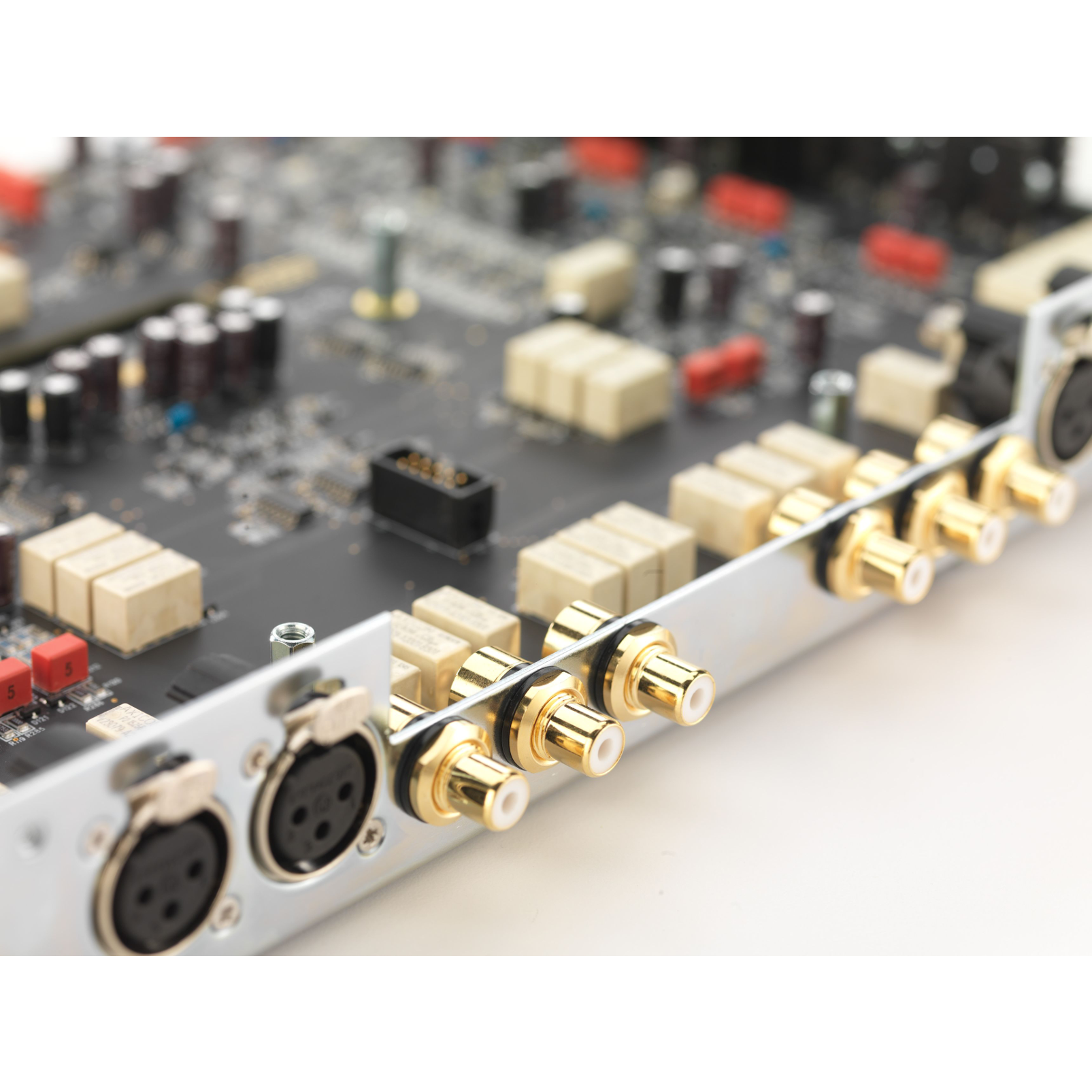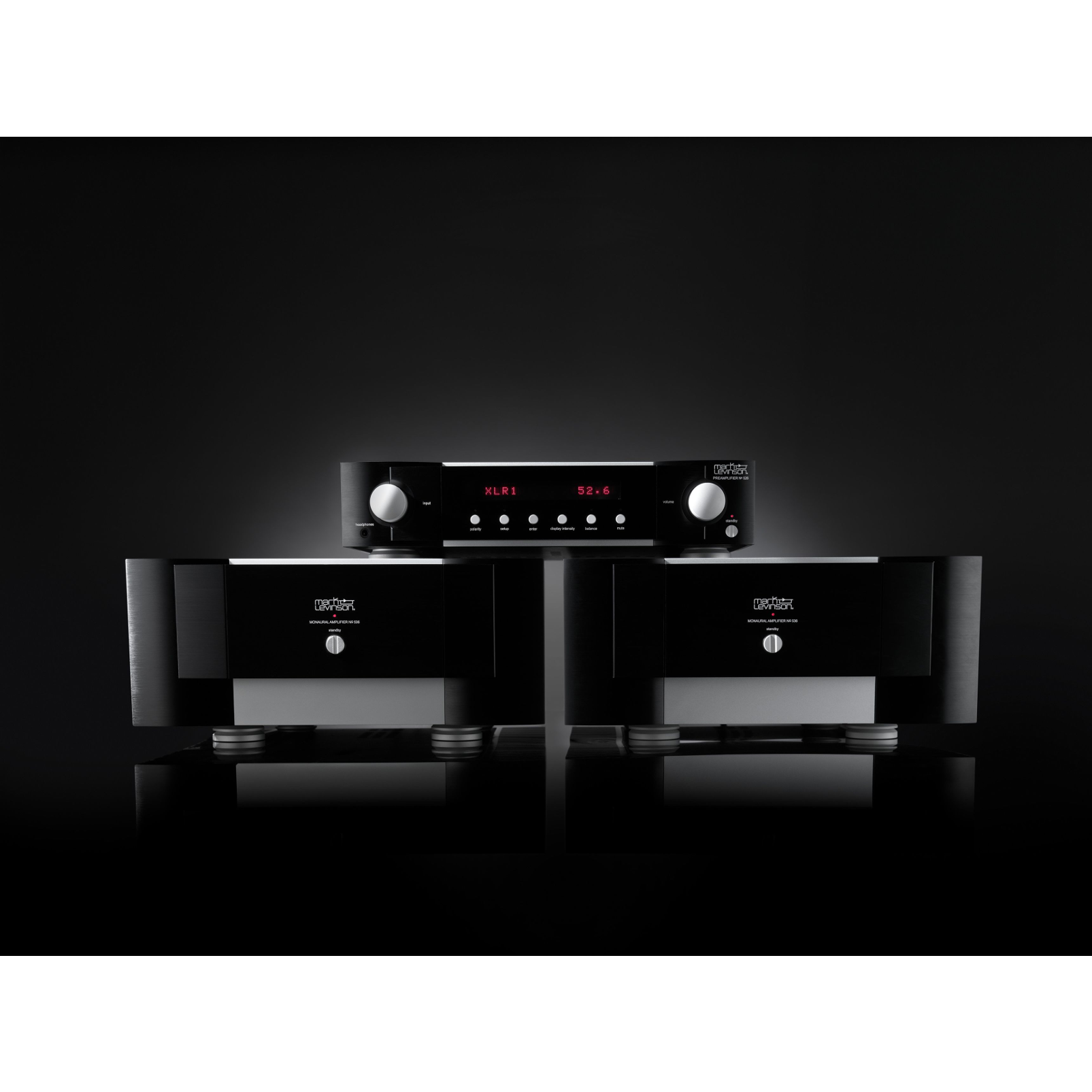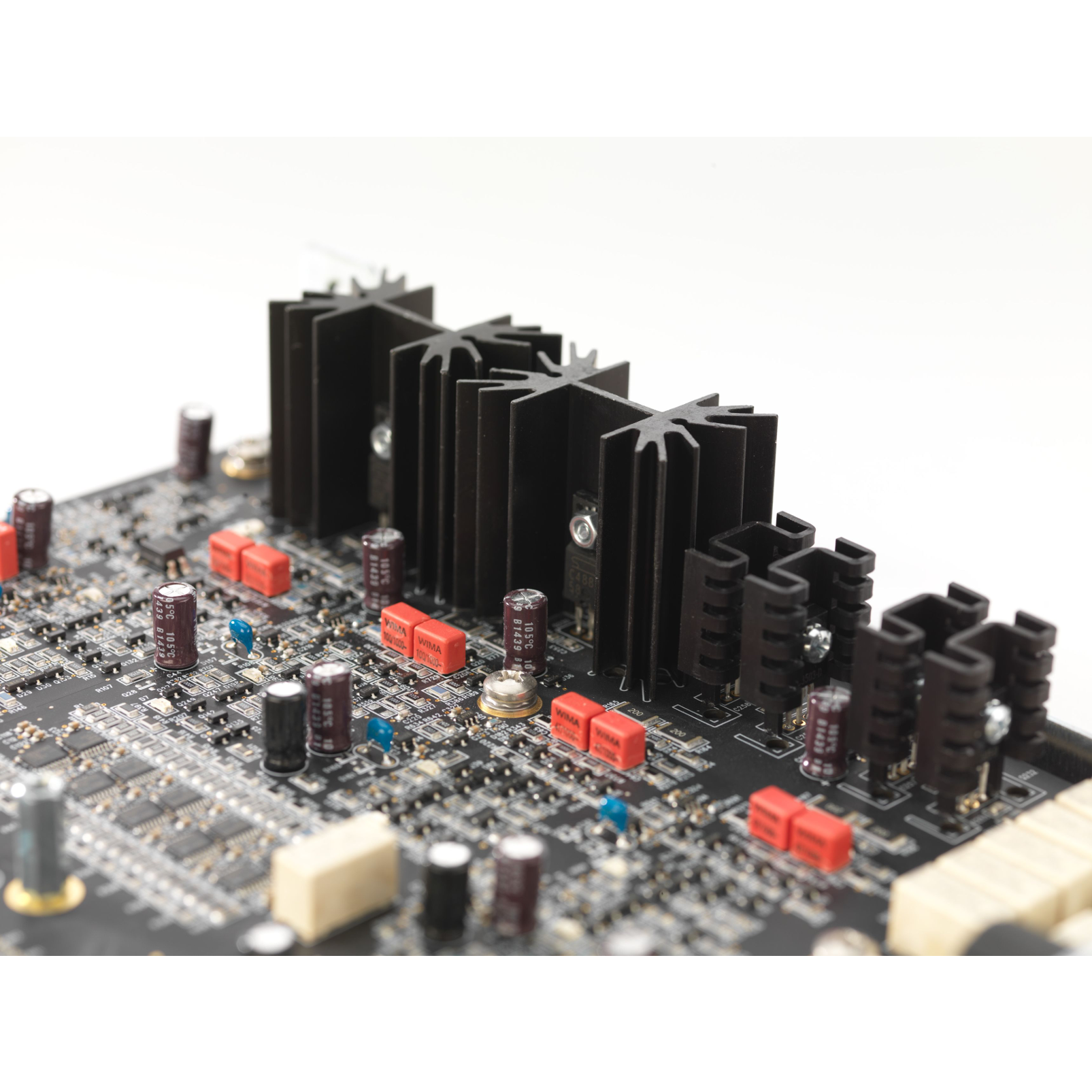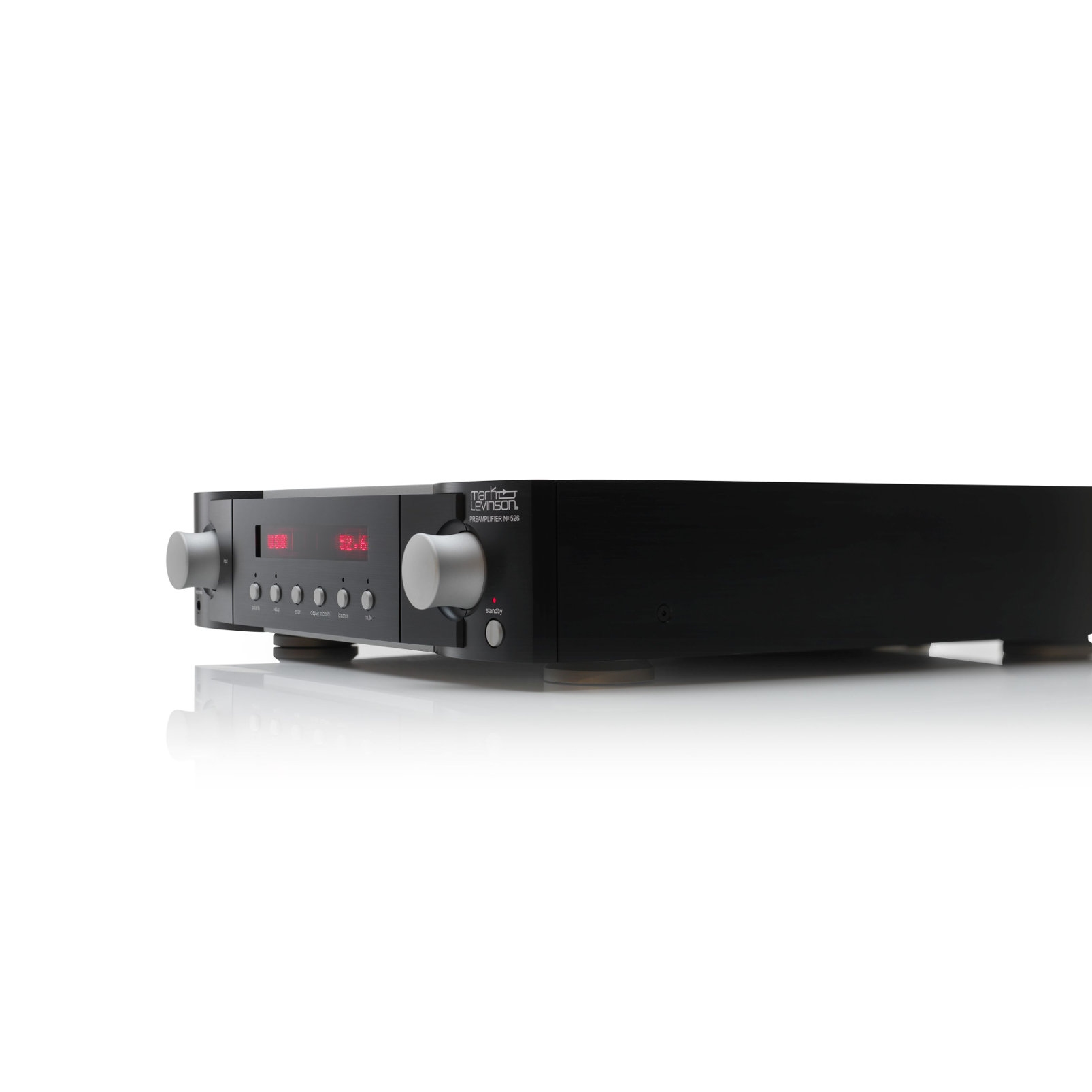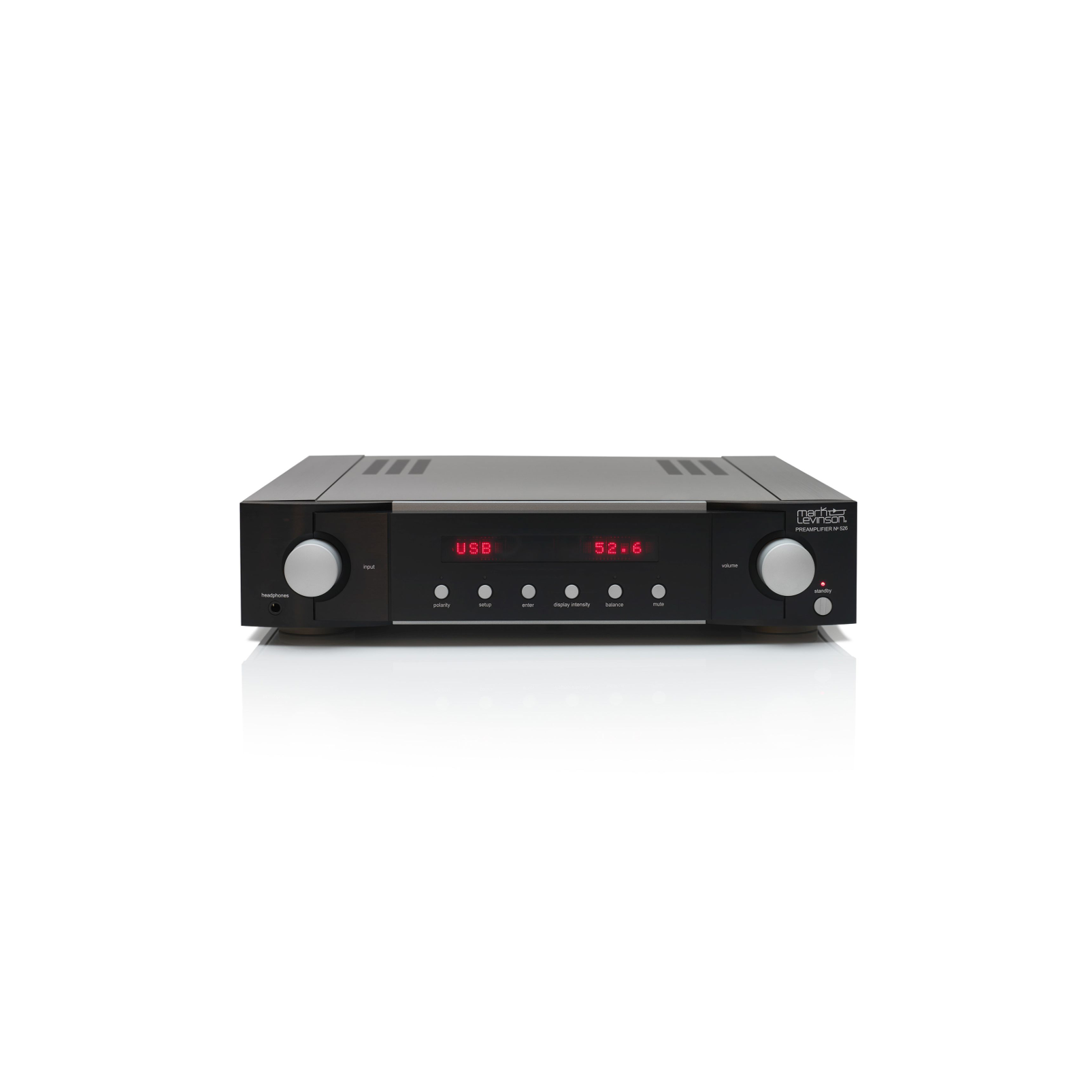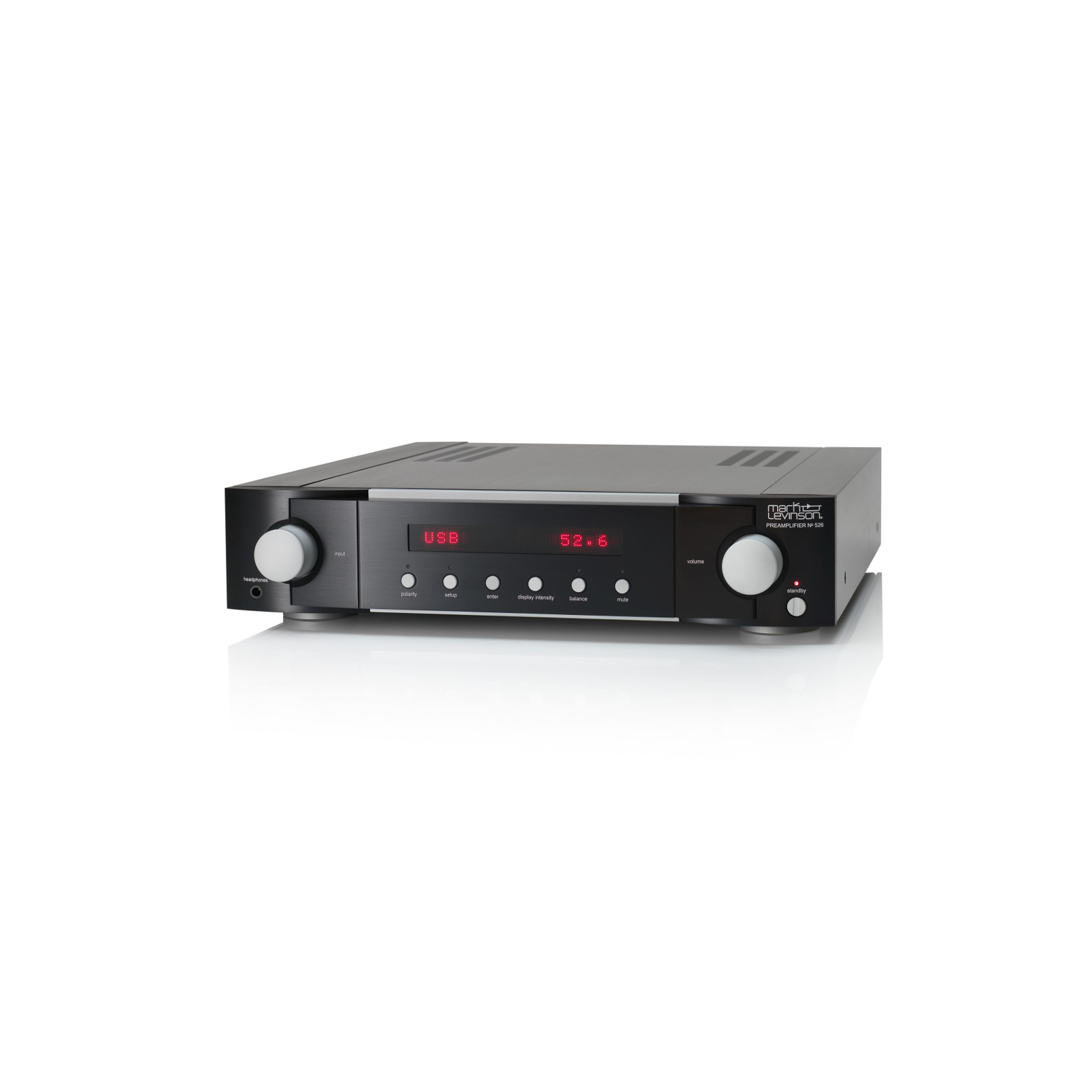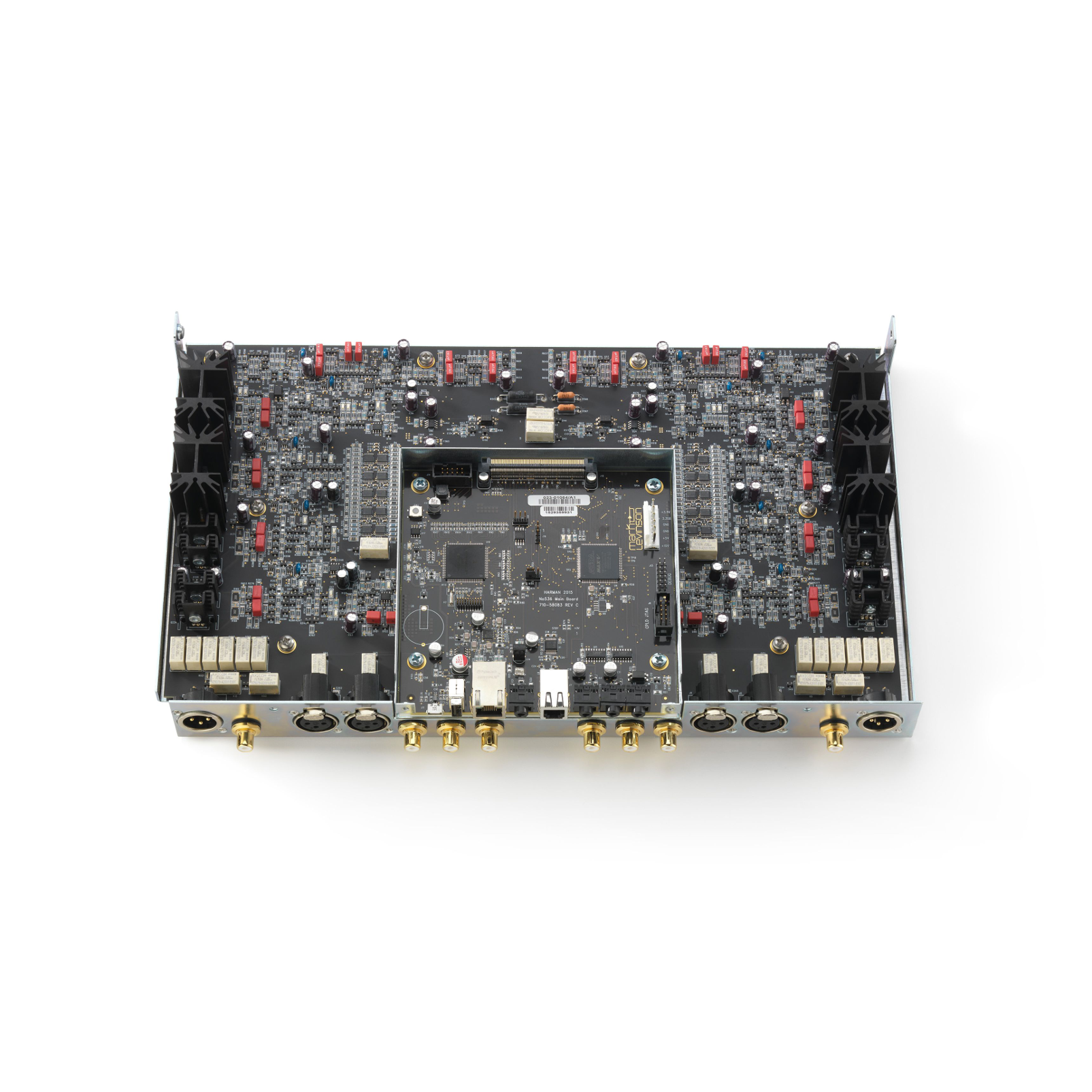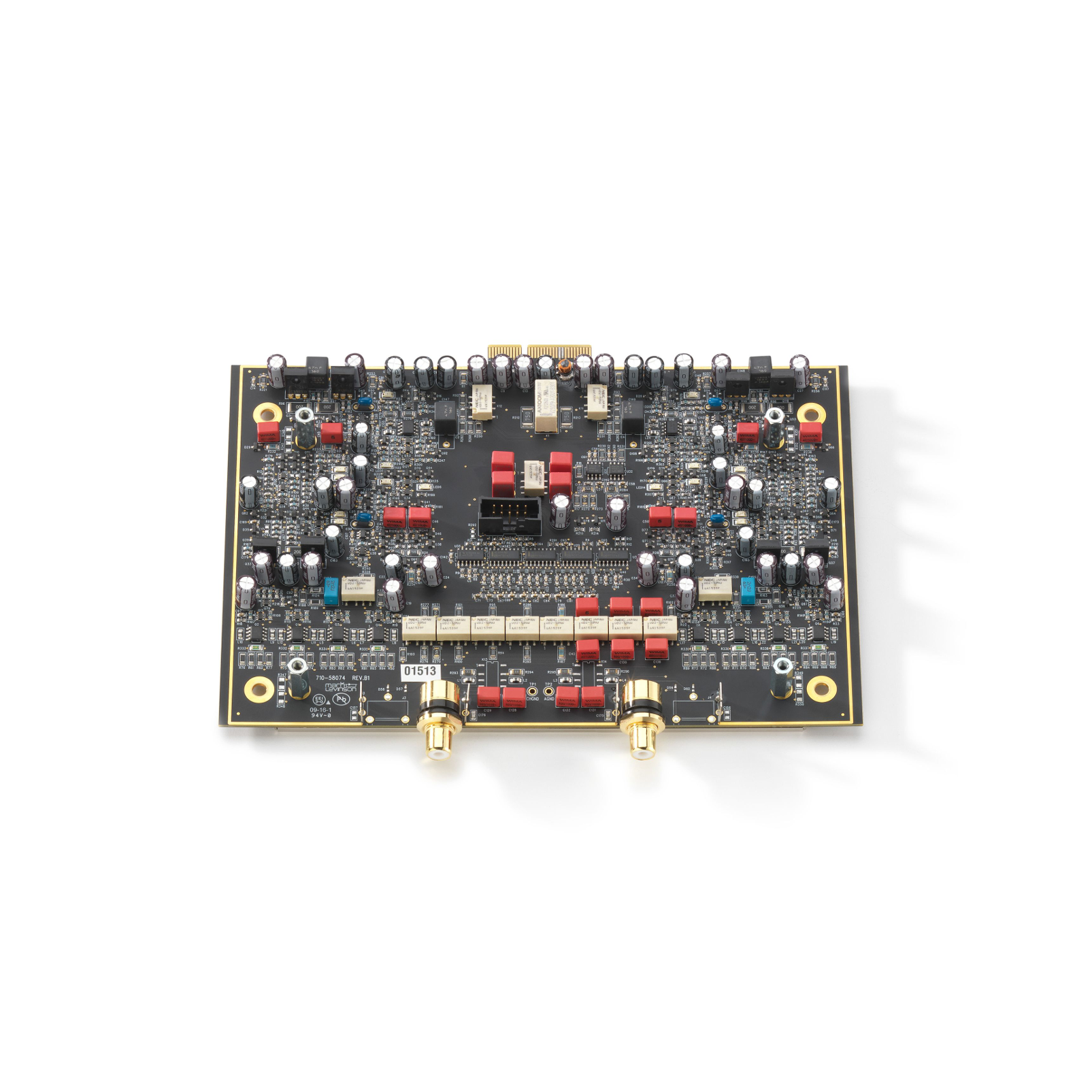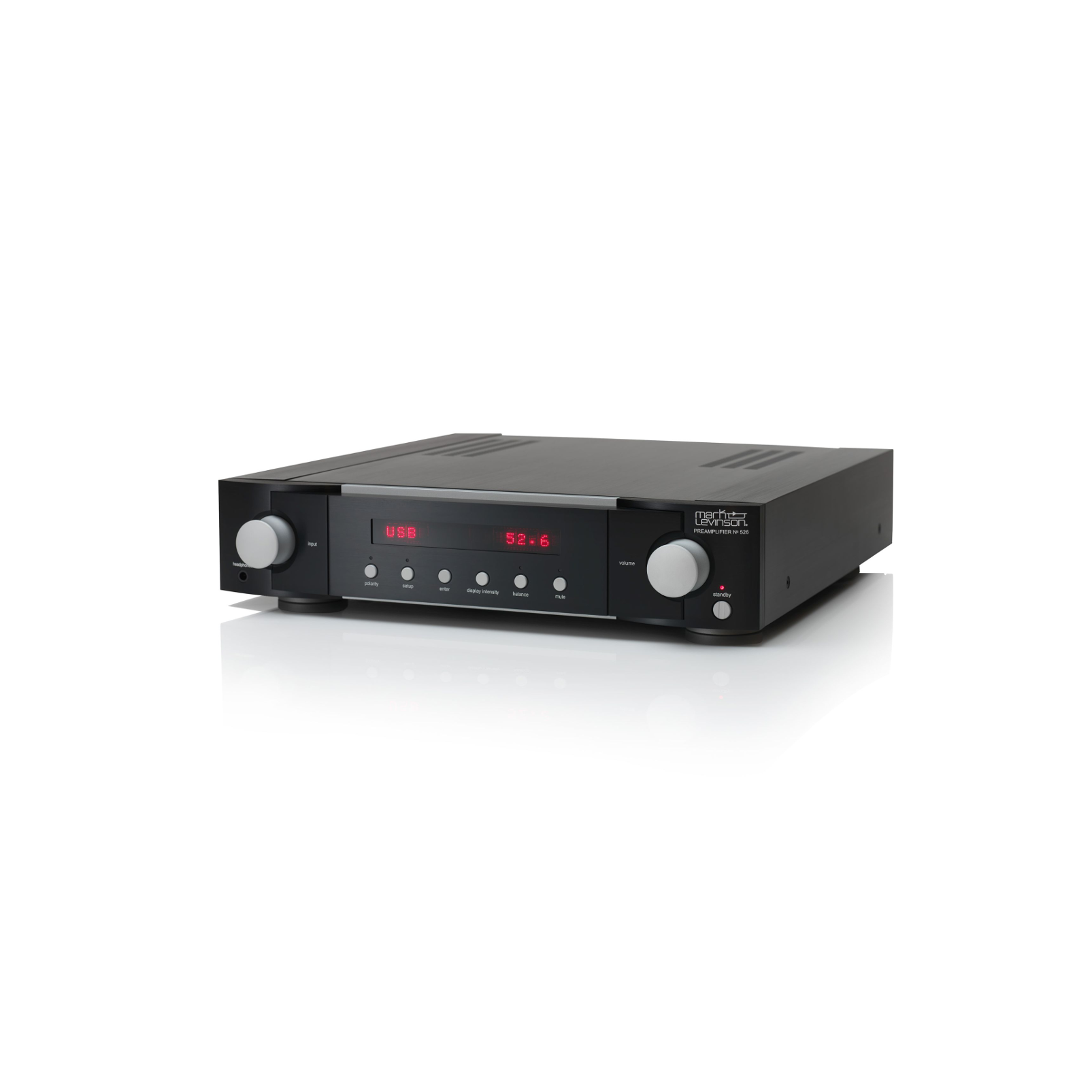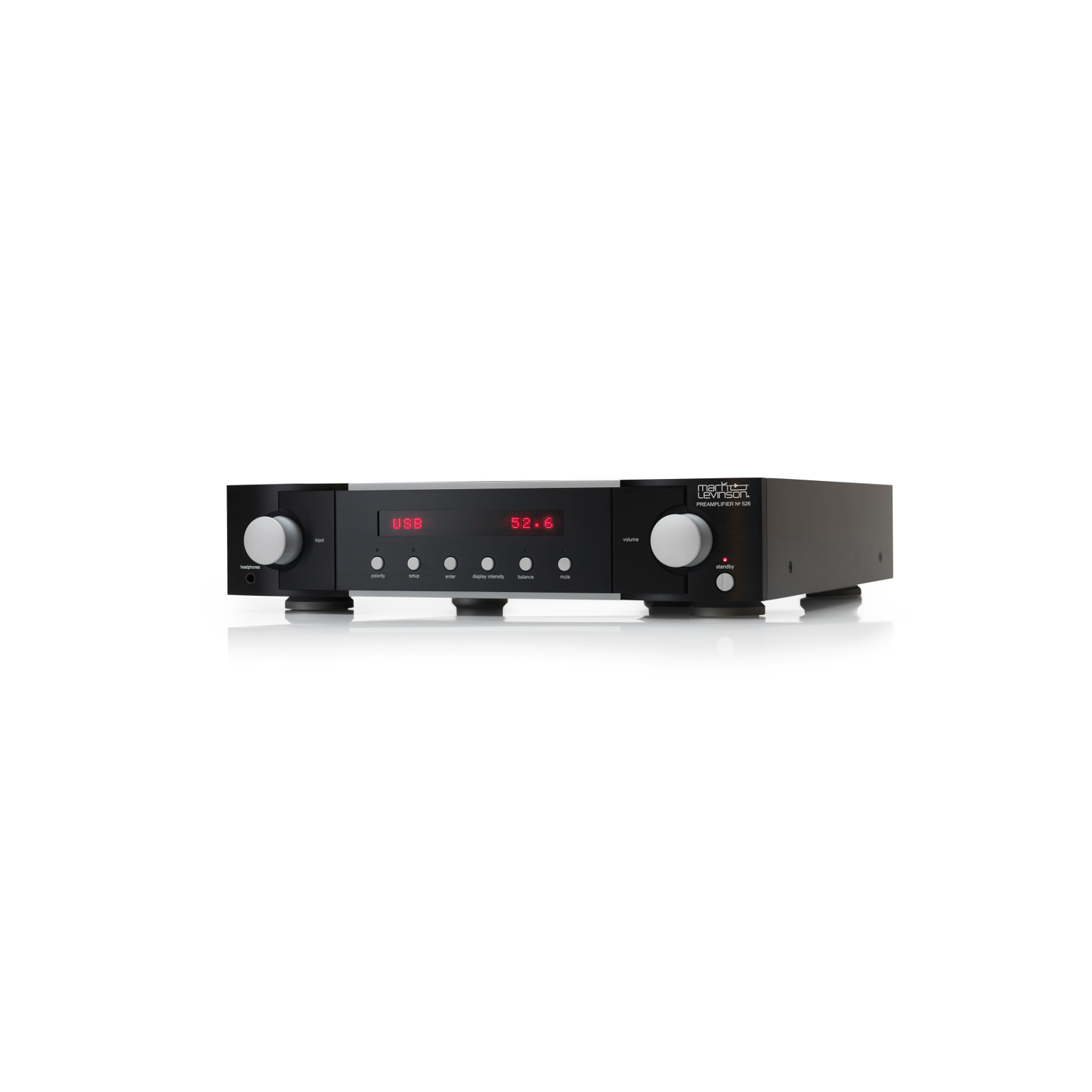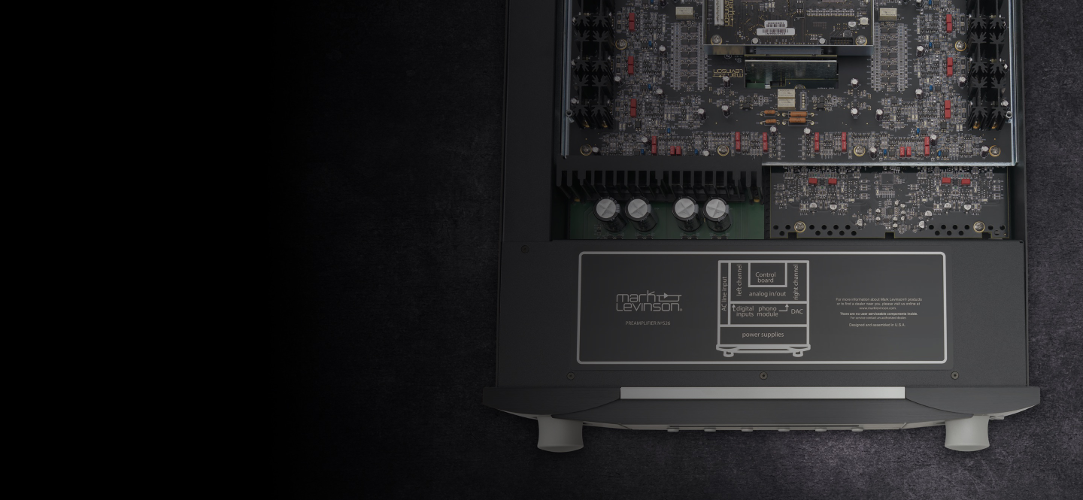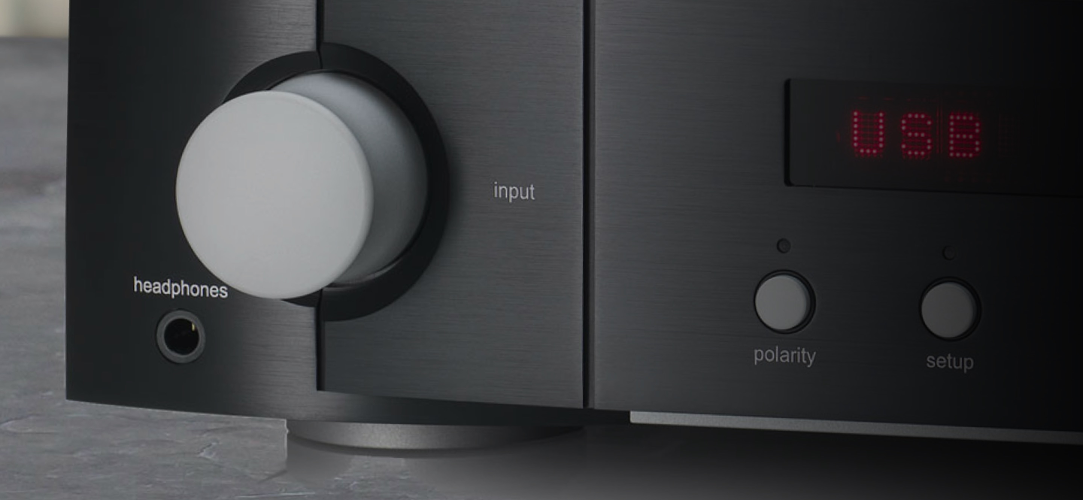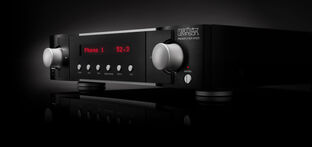The Mark Levinson № 526 is the definitive preamplifier for today’s music lover. Twelve analog, phono, and digital inputs travel through the Mark Levinson proprietary Pure Path discrete, direct-coupled, fully balanced, dual-monaural signal path for breathtaking purity and performance. With precision control and processing including a discrete, balanced R-2R Ladder volume control, the acclaimed 32-bit Precision Link DAC, and Class-A Pure Phono stage, the № 526 preamplifier delivers an uncompromising performance regardless of source. Housed in a 6000-series aluminum chassis, like all Mark Levinson equipment, the № 526 is designed and handcrafted in the USA.
Mark Levinson Pure Path Circuit Design
Since 1972, Mark Levinson has been dedicated to the uncompromising art of sound, with the guiding principle of musical purity above all else. To achieve that goal like never before, Mark Levinson engineers scoured company archives, ultimately developing a circuit-design philosophy called Pure Path. On a conceptual level, its hallmark principles include a discrete, direct-coupled, fully balanced, dual-monaural signal path that delivers unrestricted, uncompromised sonic purity.
Far from merely arranging high-quality components in an intelligent manner, Pure Path is the meeting of science and art: Mark Levinson engineers are tasked to create the best possible measured AND subjective performance. To quote Albert Einstein: “Everything should be made as simple as possible, but not simpler.”
Pure Path highlights in the № 526 include Folded Cascodes, an R-2R Ladder volume control, the acclaimed Mark Levinson Precision Link DAC, the Pure Phono stage, and Main Drive Headphone amplifier output.
Analog Mastery: The Folded Cascode
Mark Levinson components are designed around a Pure Path amplifier circuit concept that makes heavy use of a circuit design element called a cascode. Originally created for improving the bandwidth of vacuum tube circuits in radios, Mark Levinson engineers deploy cascodes in Pure Path circuit designs to both improve bandwidth and enhance linearity. A cascode combines two transistors so that they operate as a single composite device that functions like a single transistor, using the wanted characteristics of each component transistor, and rejecting the unwanted characteristics.
Mark Levinson engineers began their design of the preamp gain stage with pairs of JFETs (junction field-effect transistors), chosen for their low noise and high gain. JFETs achieve these characteristics in part by being large, and with their large size comes nonlinear gain – or distortion. To mitigate this, BJTs (bipolar junction transistors) were added to the circuit. The BJTs exhibit very low input impedance and very high output impedance, which translates to excellent bandwidth and linearity. By creating a cascode of the JFETs and BJTs, they created a design with the best characteristics of both sets of devices.
Engineers than connected the output of the cascode to another transistor of the opposite “gender.” Current flows through it in the opposite direction to “turn around” the direction of the signal current. This special connection is called a Folded Cascode and it is a hallmark of the Pure Path circuit: high gain with low noise, wide bandwidth, and excellent linearity.
Superior Volume Control: The R-2R Ladder
The basis of many volume controls is the venerable analog potentiometer – a device with a number of performance drawbacks. The mechanical connection wears out, creating scratching or crackling noises; it is nearly impossible to manufacture an identically performing pair, and mismatches in a stereo pair can cause level imbalances between the two channels; and due to their varied reaction to parasitic capacitances at different volume settings, the sound changes depending on where the volume is set. Rather than attempting to improve upon this flawed design, Mark Levinson engineers abandoned it. Instead, they employed a complex circuit architecture called an R-2R Ladder.
In the R-2R Ladder, a string of resistors, all with identical resistance (R), form the side of the ladder, with another set of resistors forming the rungs, all identically with double the resistance (2R). This unique circuit takes whatever current appears at its input and successively divides it in half at each “rung” of the ladder. Different combinations of “rung” currents can then be selected and added together, precisely delivering nearly any output current, and thereby, volume setting.
An R-2R Ladder is a highly accurate device. The currents through the rungs are determined by fixed resistors, capable of very tight tolerances, able to be closely matched to one another in value. Analog switches “steer” the currents, are precision devices and have no mechanical contacts to wear out. In short, the R-2R Ladder solves all the problems inherent to potentiometer-based volume controls. That’s why it is a cornerstone of Mark Levinson Pure Path design philosophy.
Military Grade Components
All Mark Levinson equipment employs electronic components carefully chosen for their specific task. Gain-stage JFET pairs have high gain, low noise, low distortion, and because they are encapsulated in the same package, the two devices operate under nearly identical conditions. Capacitors used in critical filtering locations are film types, noted for their consistent performance regardless of temperature and frequency. Finally, resistors in critical gain-setting and feedback locations use tantalum nitride thin-film elements. An extremely costly material, tantalum nitride typically finds use in sensitive military equipment because it is unusually stable with respect to temperature, exhibits very low noise, and is unaffected by magnetic fields. In fine audio equipment, those characteristics make the sound even more revealing and effortless, free of the low-level nonlinearities caused by lesser resistive materials as they heat and cool under dynamic conditions. Housed in an aircraft-grade 6063-T5 extruded aluminum chassis, the № 526 features extremely high build precision, to exceedingly low tolerances.
Pure Phono: Class A for a Classic Medium
Preamplifying from a turntable to line level can a difficult task, and it is an area where some equipment makers skimp on components and design. The № 526 and № 523 preamplifiers introduce a new Mark Levinson phono stage, Pure Phono, itself following Pure Path design principles including discrete design, free of op-amps. The Pure Phono stage operates exclusively in class A throughout, employing tantalum nitride thin-film resistors polypropylene capacitors with punishingly low tolerances. The Pure Phono stage also contains physically separated channels and balanced inputs for purity.
The Pure Phono stage offers a fixed-gain MM section with five capacitive cartridge-loading settings and an MC section with three gain settings and 10 resistive cartridge-loading settings. And an infrasonic filter intelligently compensates for rumble and warping.
The Mark Levinson Precision Link DAC
First introduced in the multi-award-winning, critically acclaimed № 585 Integrated Amplifier, the Mark Levinson Precision Link DAC transforms digital data streams into analog audio art. Like every other element of a Mark Levinson component, it combines unique Pure Path engineering design approaches with painstakingly selected components to deliver impeccable performance than can be appreciated both on the test bench and in the listening room.
The converter chip in the Mark Levinson Precision Link DAC comes from ESS Technologies, a company known for jitter-elimination circuitry. Jitter – inaccuracies in the timing of samples arriving at the converter – causes distortion. The ESS converter resynchronizes incoming data to its own extraordinarily stable clock. Combined with its 32-bit resolution, the low-jitter stream reduces distortion and noise, allowing remarkable retrieval of ambient detail that other DACs simply miss.
The Precision Link DAC operates the converter’s outputs in current mode, where they are fed into a fully balanced current-to-voltage (I/V) converter that provides the exact signal level desired. Maintaining near-zero voltage keeps the current sources virtually immune to nonlinearity, maximizing bandwidth and minimizing distortion. Common-mode noise and distortion are canceled in this mirror-imaged, differential configuration, resulting in a pristine signal with a vanishingly low noise floor.
Also contributing to the Mark Levinson Precision Link DAC’s low noise floor is its unique power supply configuration: five independent power supplies operate the converter chip alone, and individual linear power supplies for the left and right channels power the discrete I/V and antialiasing filter circuits.
Personalized Performance with Precision Link DAC Filters
The Precision Link DAC performs oversampling and digital filtering of digital audio data. This process increases the effective sample rate by filling in additional data points between the actual data present, which in turn reduces the demands on the low-pass (antialiasing) filter required on the analog output of the converter.
Three digital filter options are available in the Mark Levinson Precision Link DAC.
- The Fast filter has a steep roll-off for maximum attenuation of unwanted high-frequency information. It offers the best noise and distortion measurements.
- The Slow filter has a gentler roll-off of high frequencies and exhibits less pre- and post-ringing on transients.
- The Minimum Phase filter has a steep roll-off of high frequencies. Unlike the other two, it exhibits only post-ringing on transients.
Music is made up of many transients; ringing after the transient is usually masked by the natural decay of the transient sound – think of the initial snap of a drumstick on a snare drum head, followed by vibration of the drum shell, drumheads, and snare wires.
These filters are selectable because there is no one correct filter choice. Some listeners are sensitive to pre-ringing on transients and believe it sounds unnatural. A digital filter with pre-ringing exhibits excellent frequency response behavior precisely because of its transient behavior. Other listeners might be more sensitive to the relatively long period of ringing exhibited by the Minimum Phase filter and therefore would prefer the Fast or Slow filter. More likely, though, is that listeners will prefer different filters with different genres of music, and they have that option with the № 526.
An Array of Pure Path Digital Inputs
The № 526 offers six digital inputs for system flexibility. One Balanced AES/EBU (XLR) input and two Coaxial (RCA) inputs use high-speed differential receivers to reject noise and provide clean digital waveforms to the Cirrus Logic digital audio receiver chip. Two additional Optical (Toslink) receivers drive the digital audio receiver directly. For direct connection to a computer, the № 526 also offers an asynchronous USB Type B input built around a CMedia USB audio processor chip. Using the high-speed USB 2.0 standard, the CMedia chip reliably and accurately receives audio data over USB in PCM format at up to 32-bit, 192 kHz; or in native DSD format at up to double speed (5.6 MHz). The CMedia chip transfers USB data asynchronously: it gets as much data as possible as and when it is available, rather than transferring the data in sync with the music playback, which reduces demands on the computer and instead allows the processor chip to precisely control the flow of data to the digital-to-analog converter.
Completing the Signal Path
The № 526 offers five line-level analog inputs: two balanced (XLR), three single-ended (RCA), in addition to the Pure Phono (RCA with grounding pin) input. The preamplifier delivers its signal to balanced (XLR) and single-ended (RCA) stereo outputs, as well as a 1/4-inch (6.3mm) Main Drive Headphone output integrated into the front panel metalwork – a first for Mark Levinson.
The Main Drive Headphone amplifier circuit drives up to 32-ohm headphones in class A by employing the main output circuit rather than a secondary signal path: a perfect example of reducing clutter in the circuit design.
A selectable fourth-order, 80 Hz high-pass filter enables a seamless integration of a single or dual subwoofers for full-range performance with a wide range of loudspeaker setups. The preamplifier features a unity-gain SSP mode that integrates the connected sources into a home theater system while still maintaining optimal and independent stereo operation for music.
System-integration connectivity includes Ethernet/IP control, RS-232, USB for monitoring and configuration via web page, plus 12V triggers and an IR input. An included machined metal remote delivers the robust feel and precise control befitting of a component of the preamplifier’s caliber.
The № 526 is proudly designed and precision-crafted in the USA.




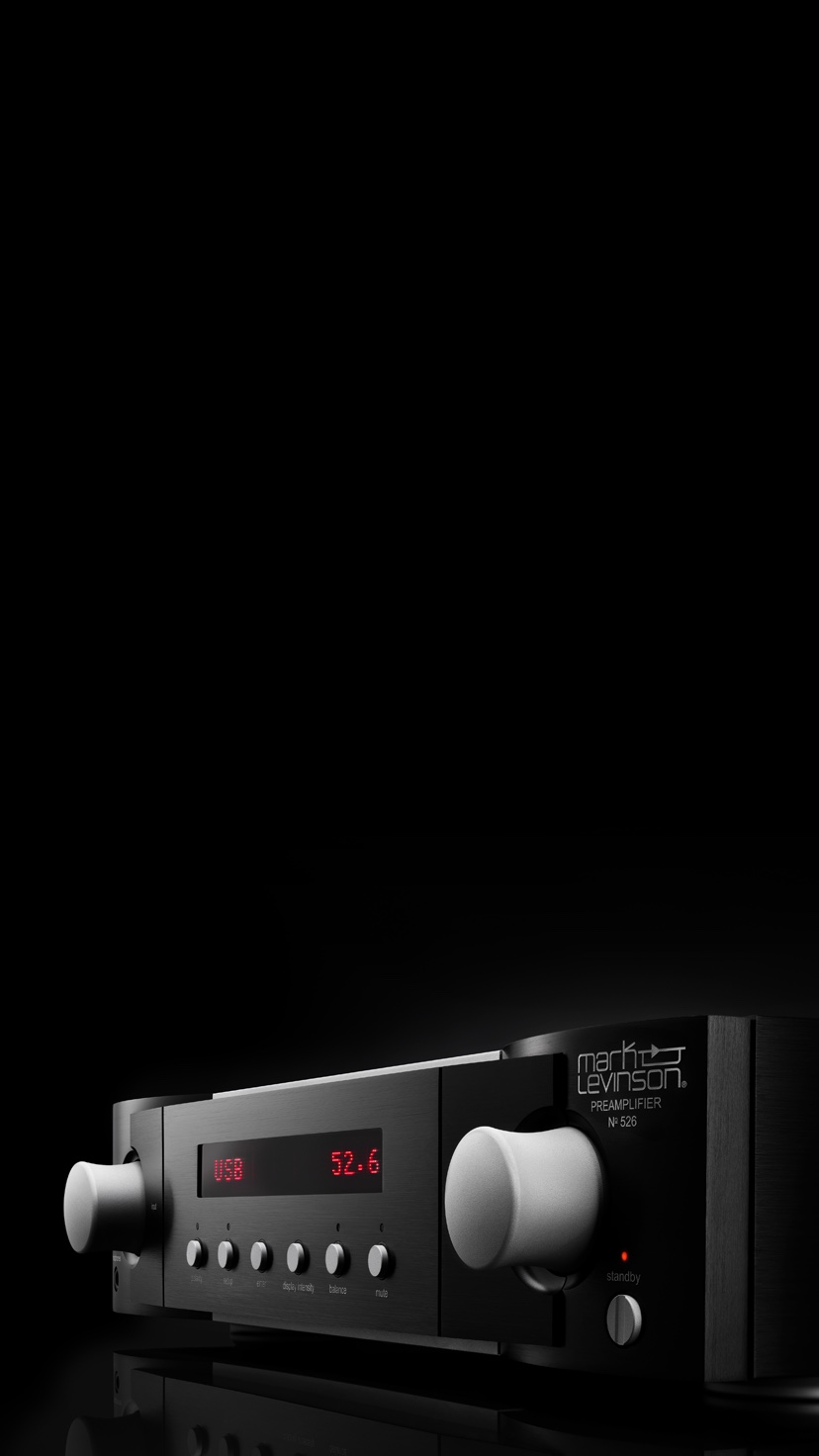

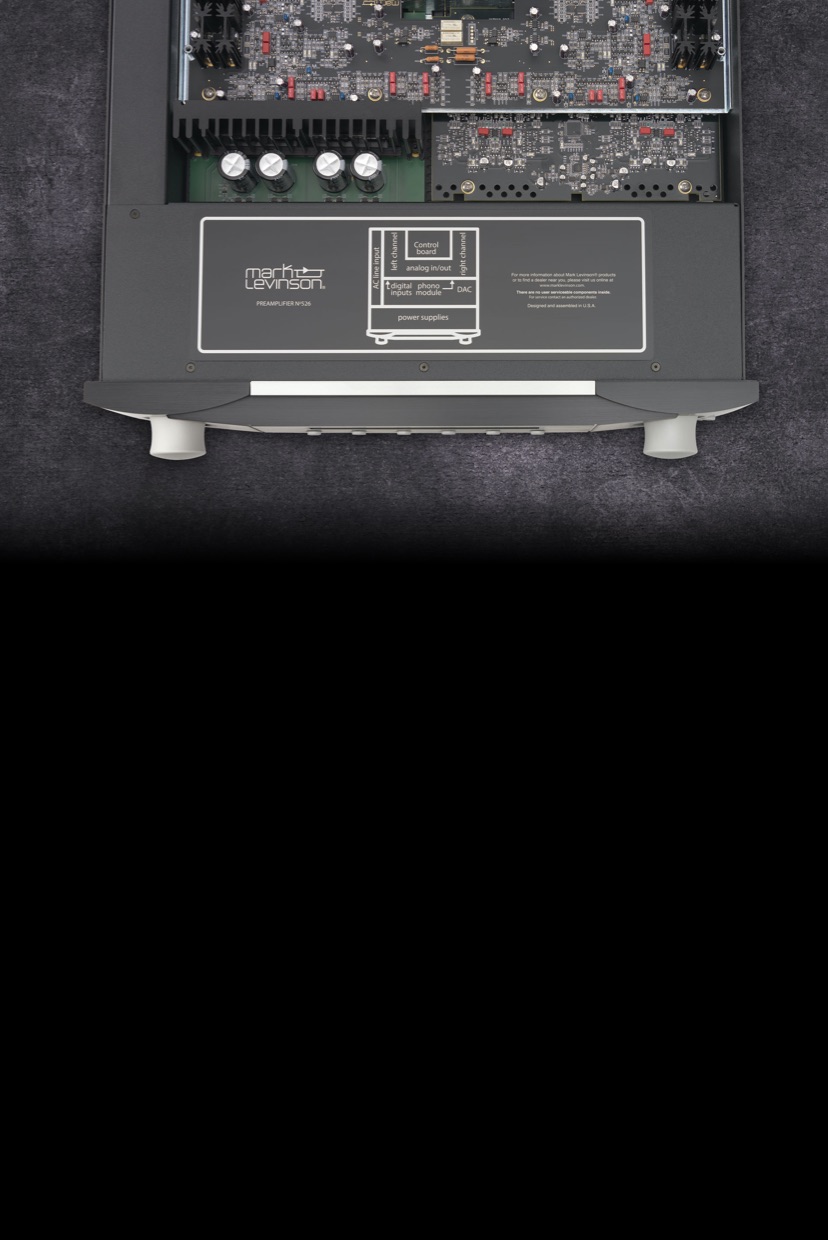
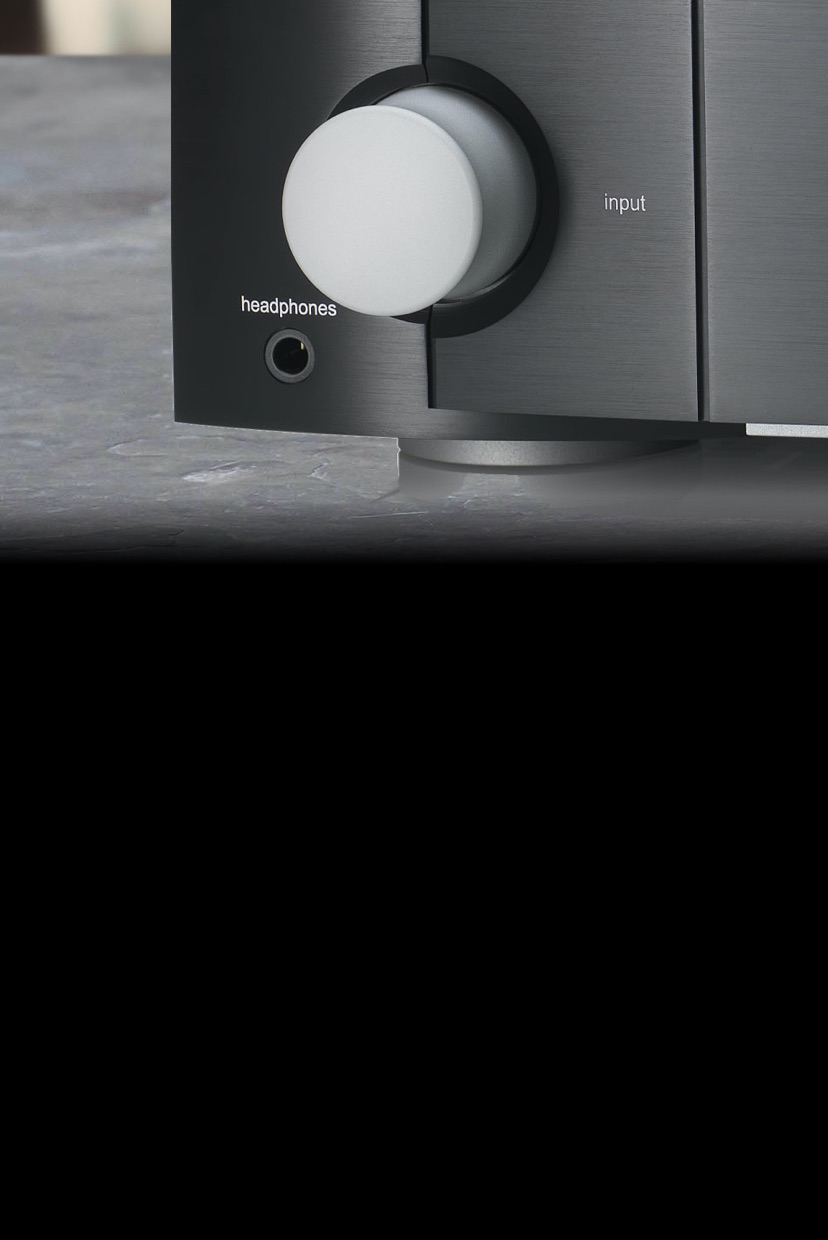

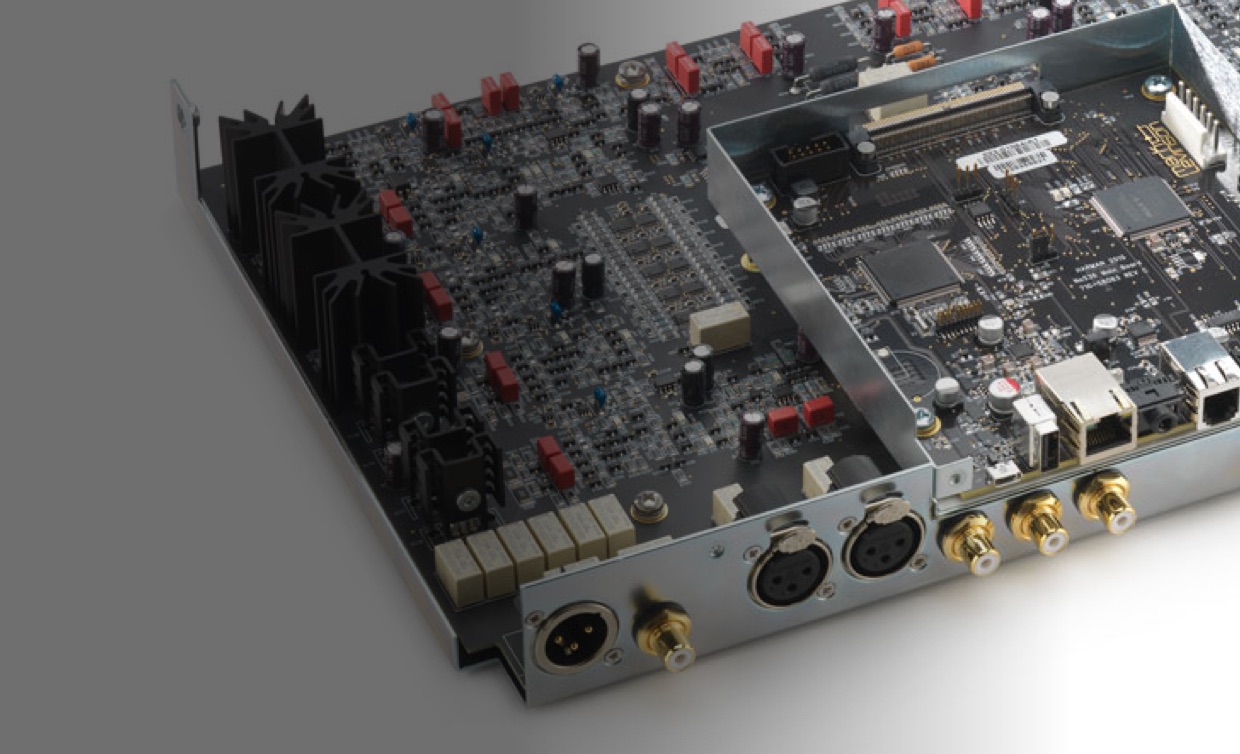

![“The № 526's sheer clarity, startling transparency, liquid midrange and ability to render brilliant dynamic contrasts [make] it different from other preamplifiers. [It’s] a revelation!”](https://www.marklevinson.com/on/demandware.static/-/Sites-ML-US-NCOM-Library/default/dwd81462ea/glp/pdp-v2/media/526/quote-01-bg-m.jpg)
![“The № 526's sheer clarity, startling transparency, liquid midrange and ability to render brilliant dynamic contrasts [make] it different from other preamplifiers. [It’s] a revelation!”](https://www.marklevinson.com/on/demandware.static/-/Sites-ML-US-NCOM-Library/default/dw6368fea8/glp/pdp-v2/media/526/quote-01-logo.png)
